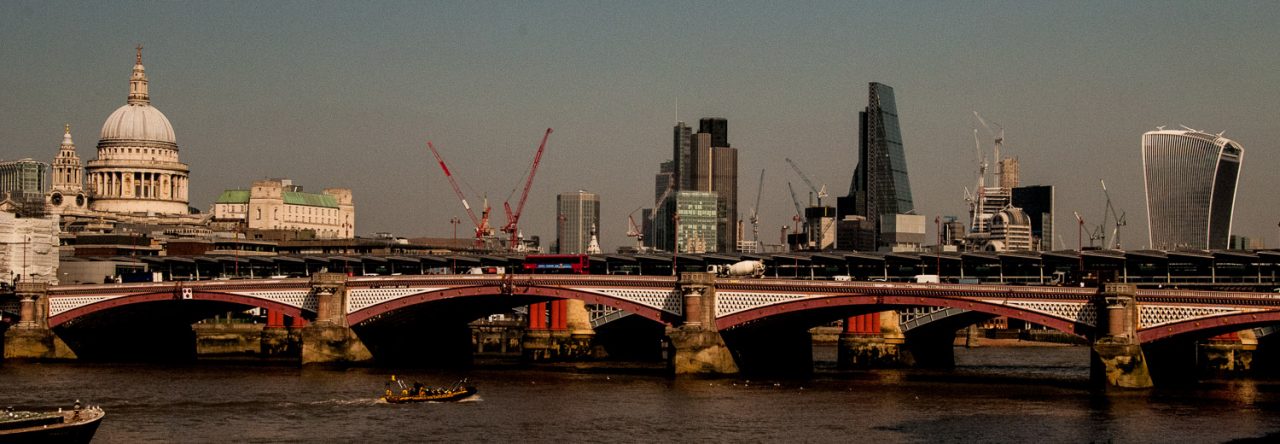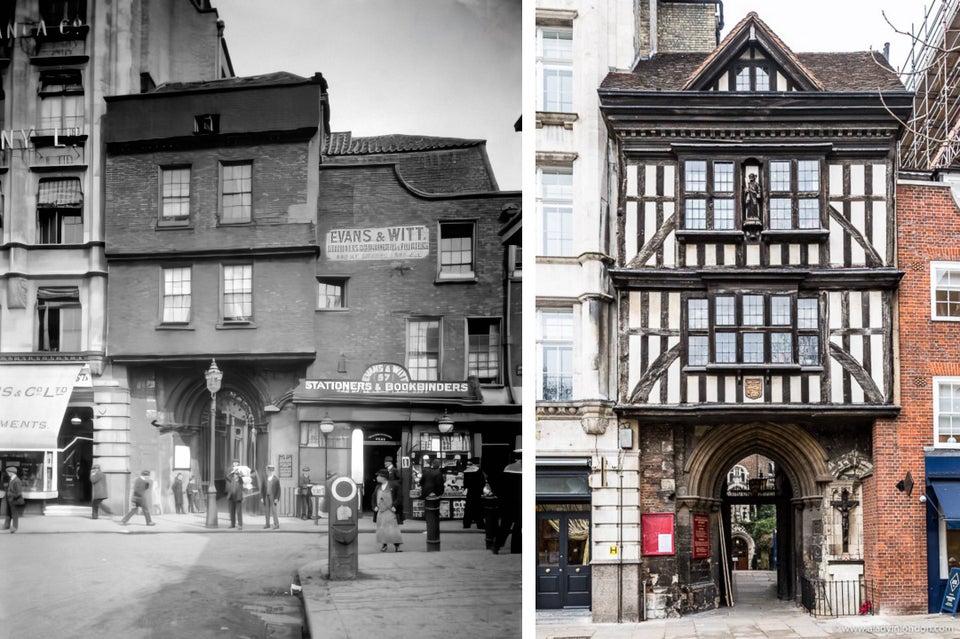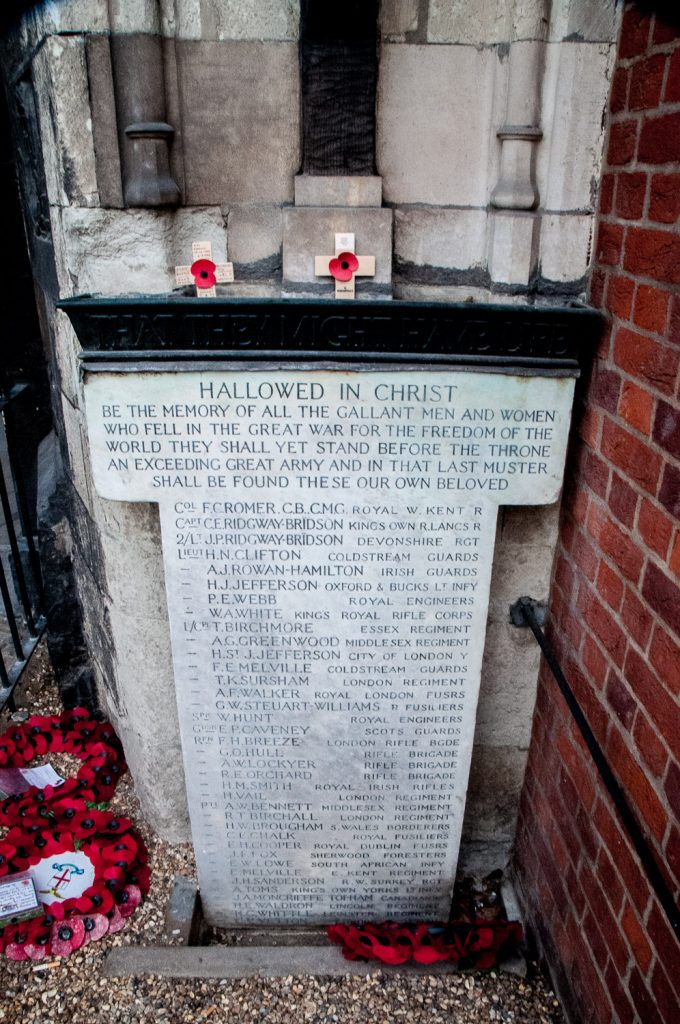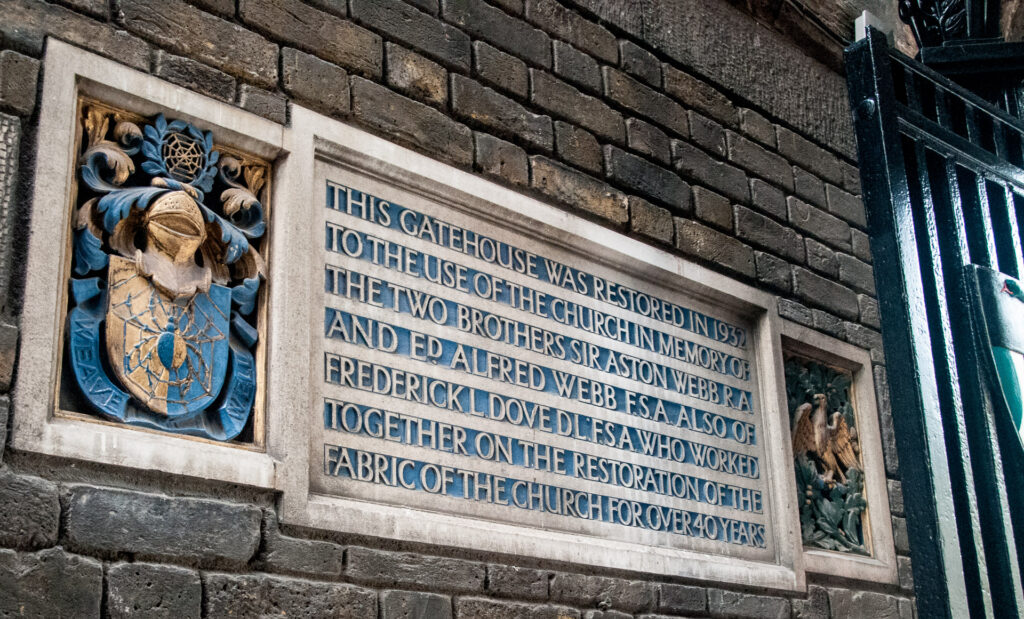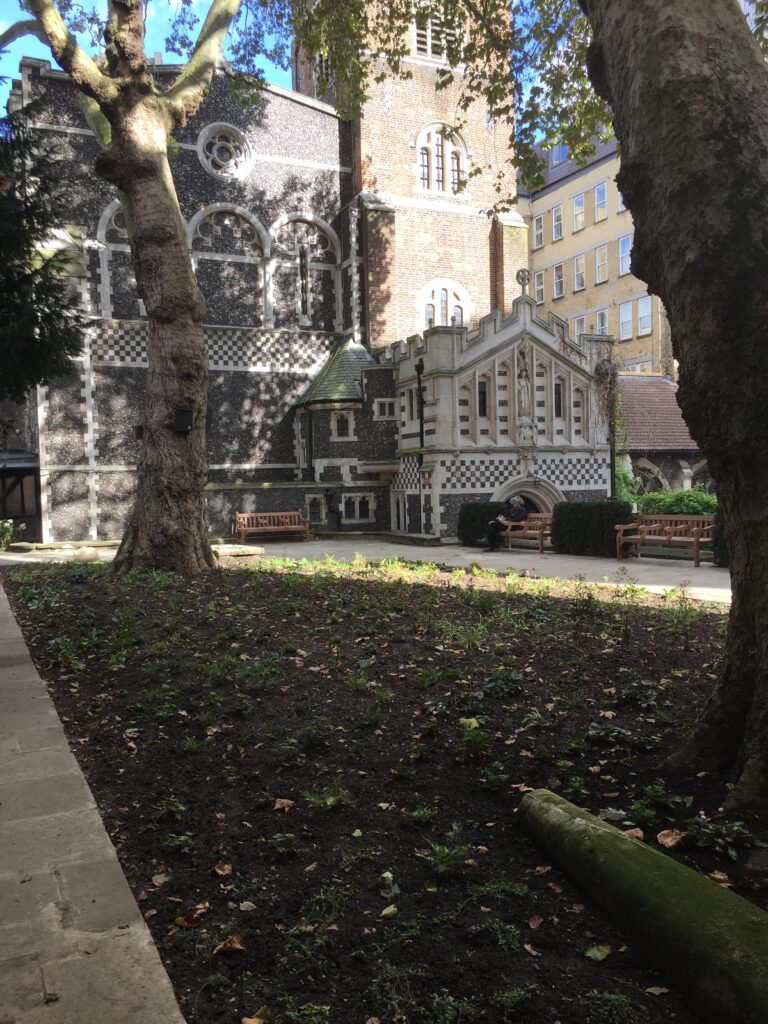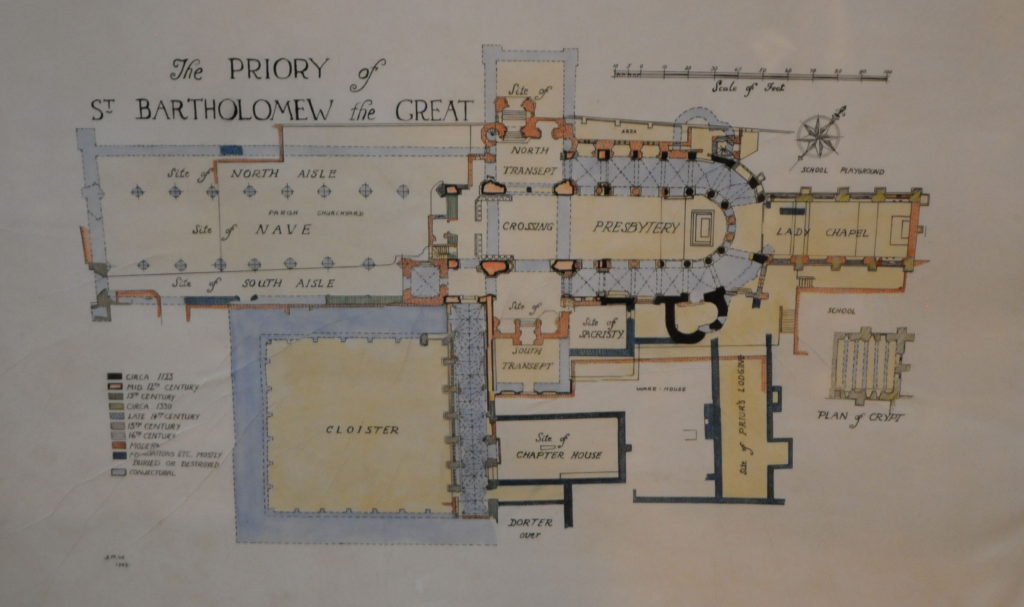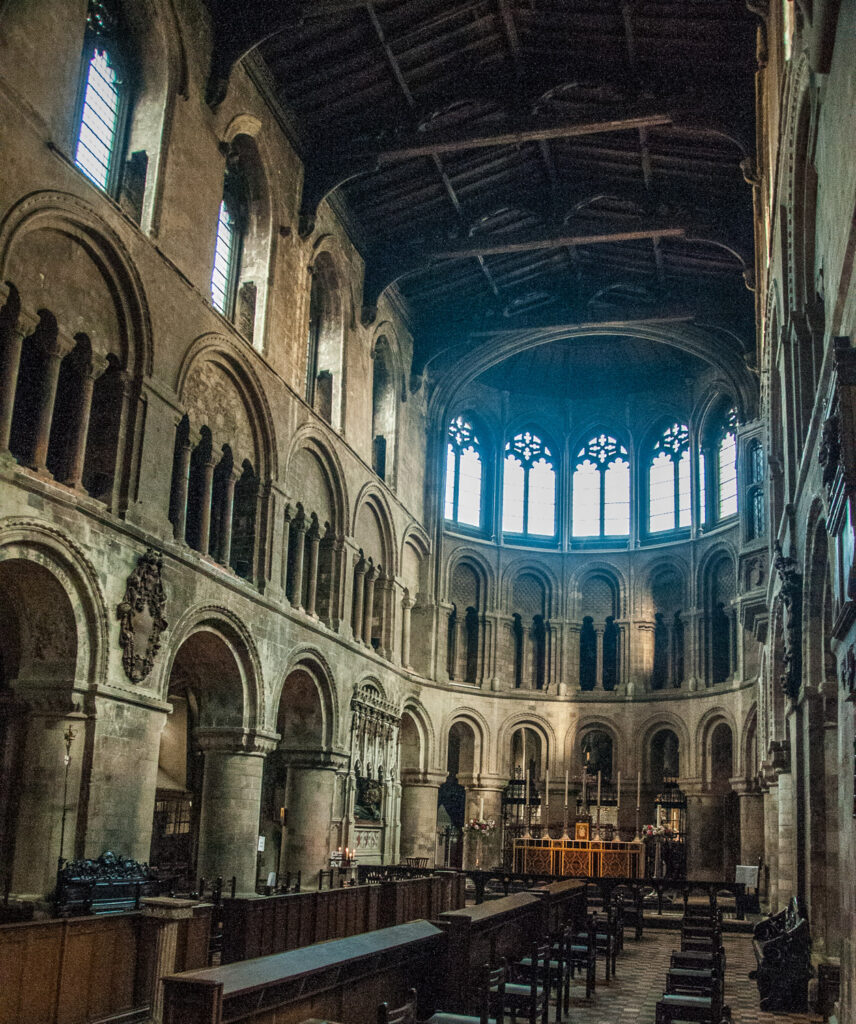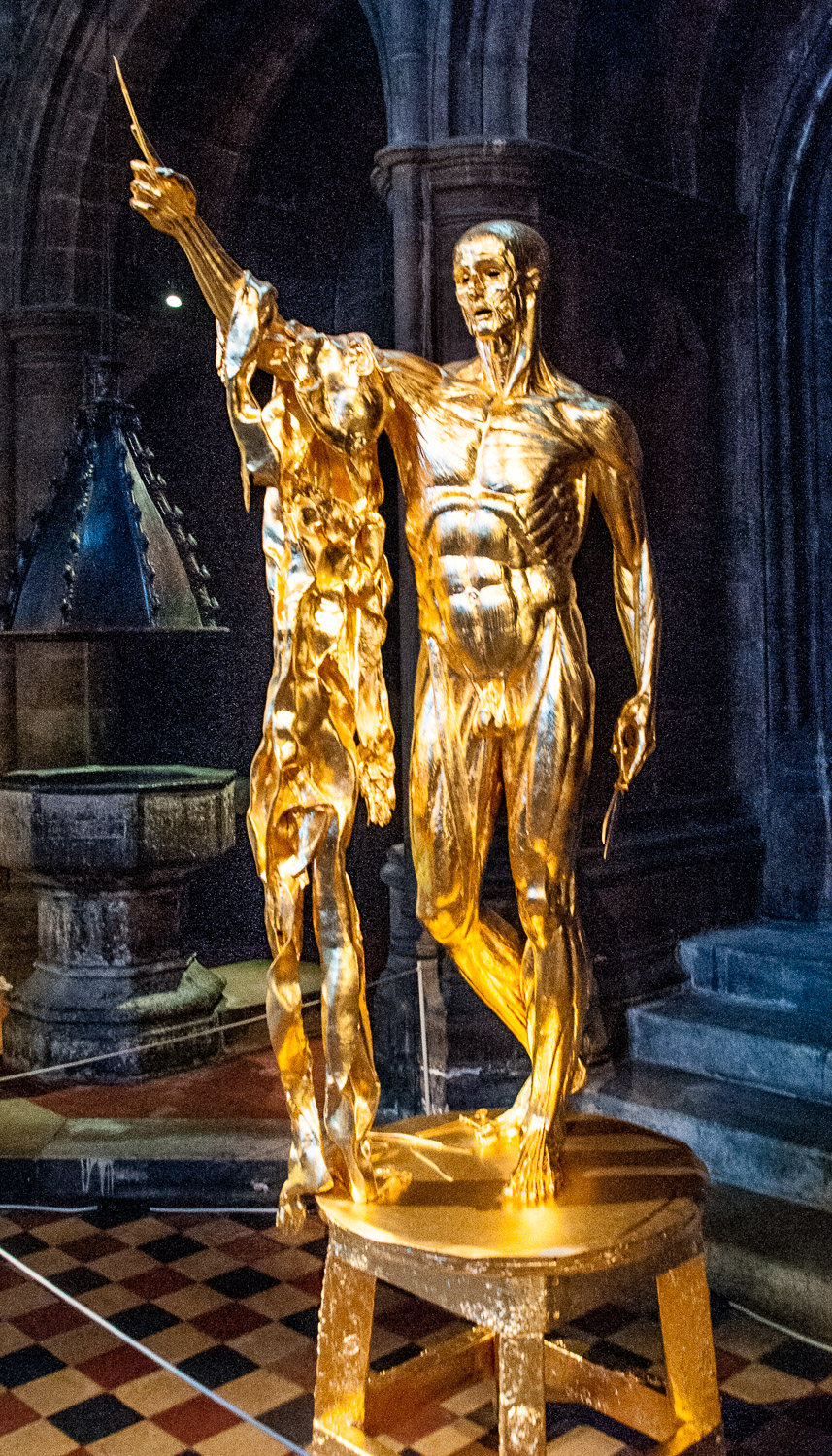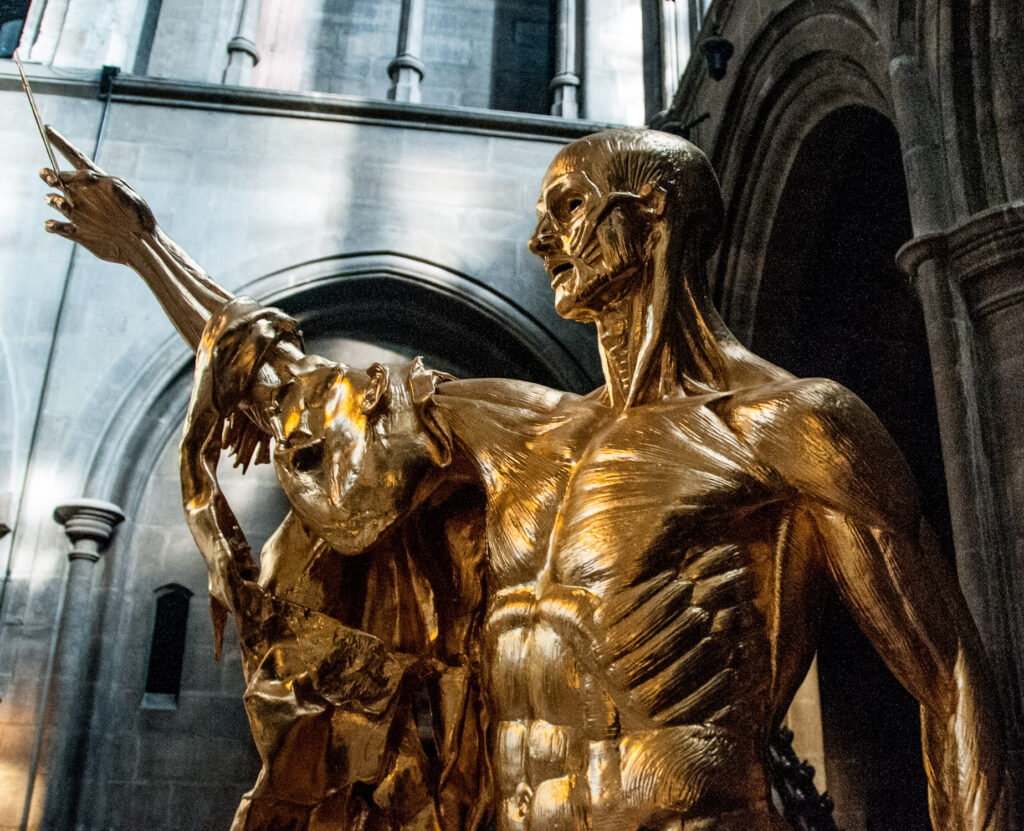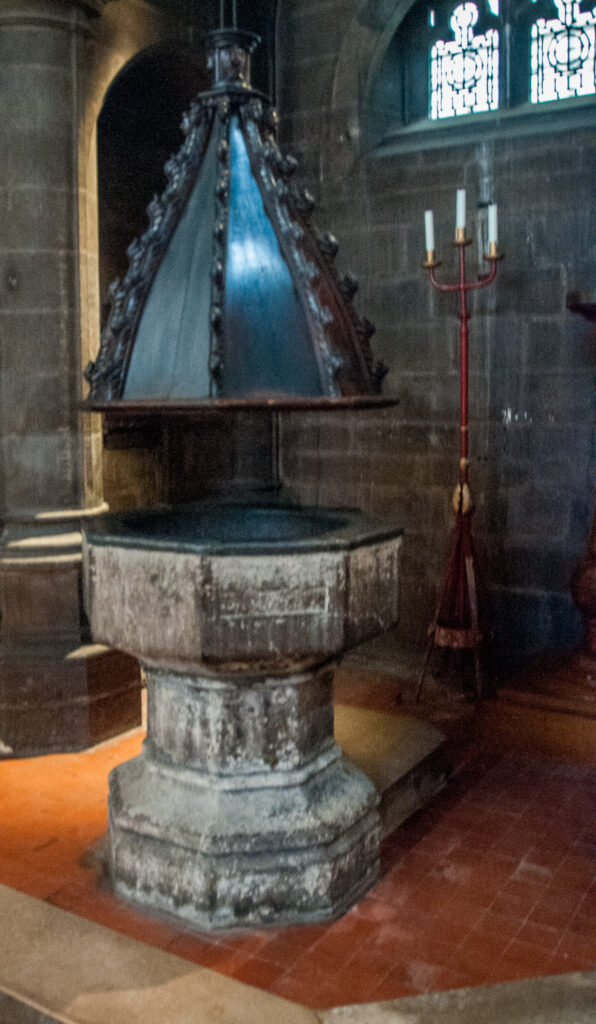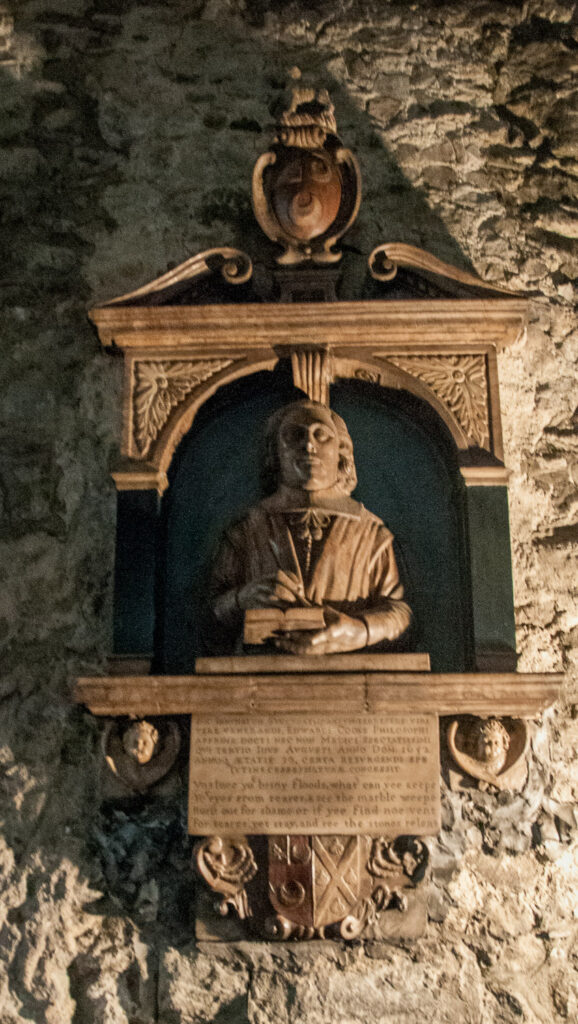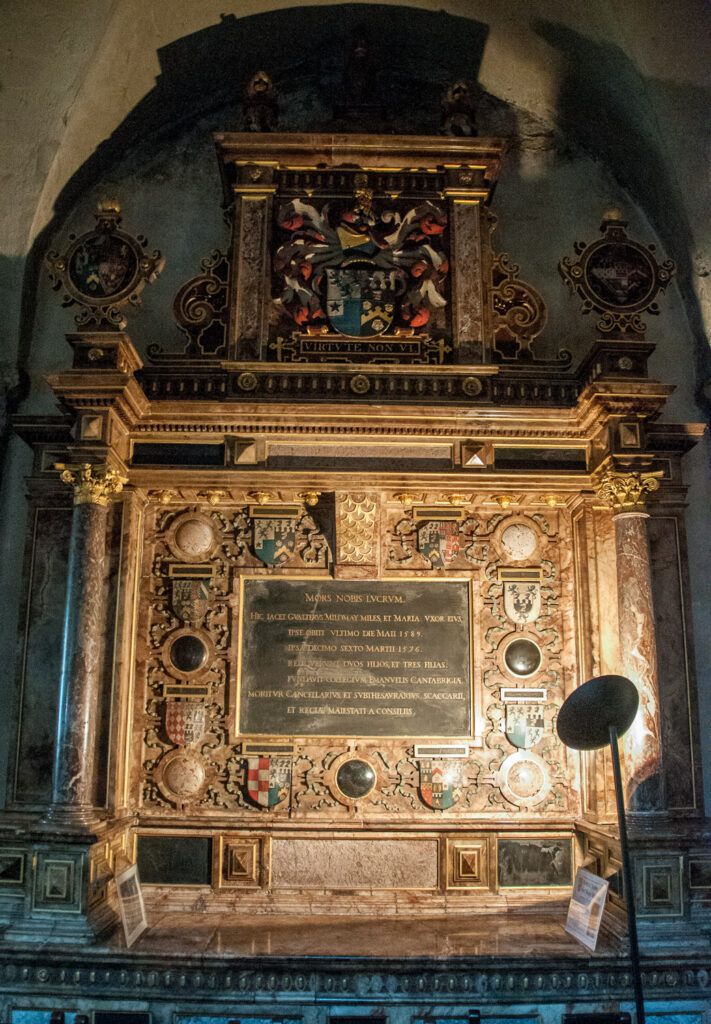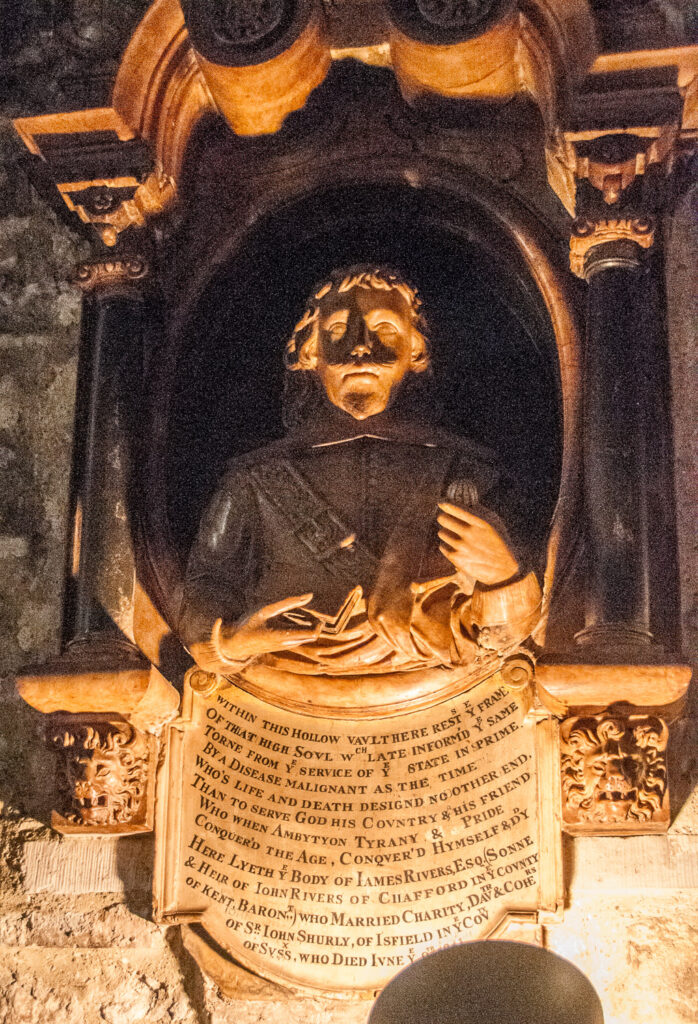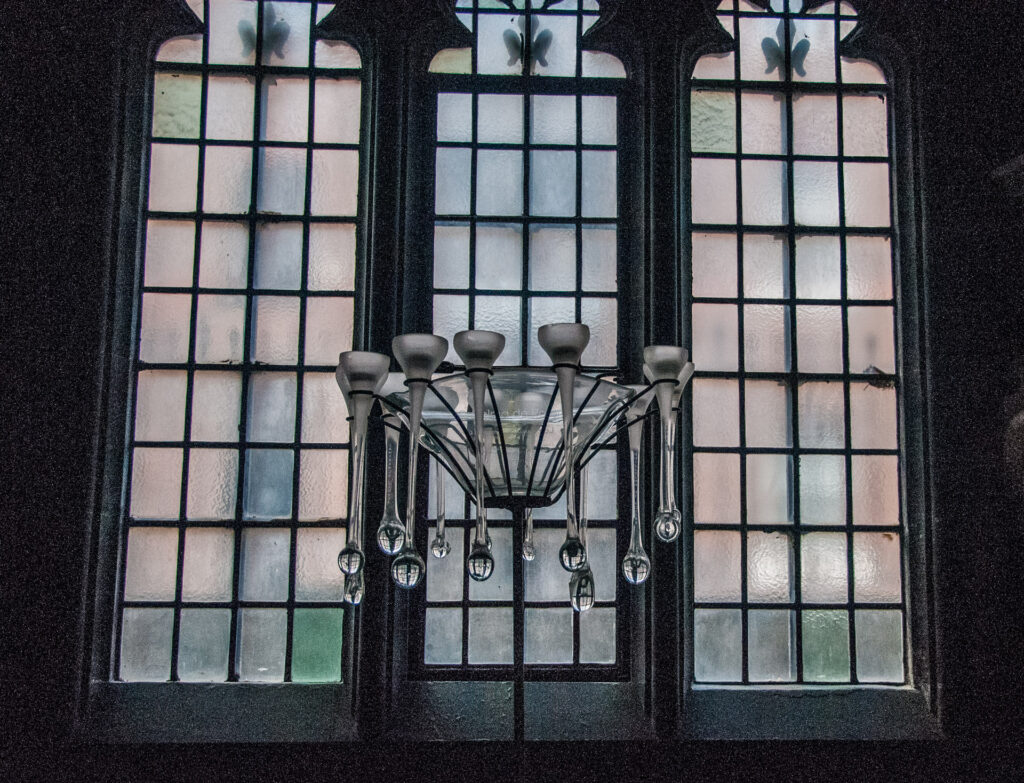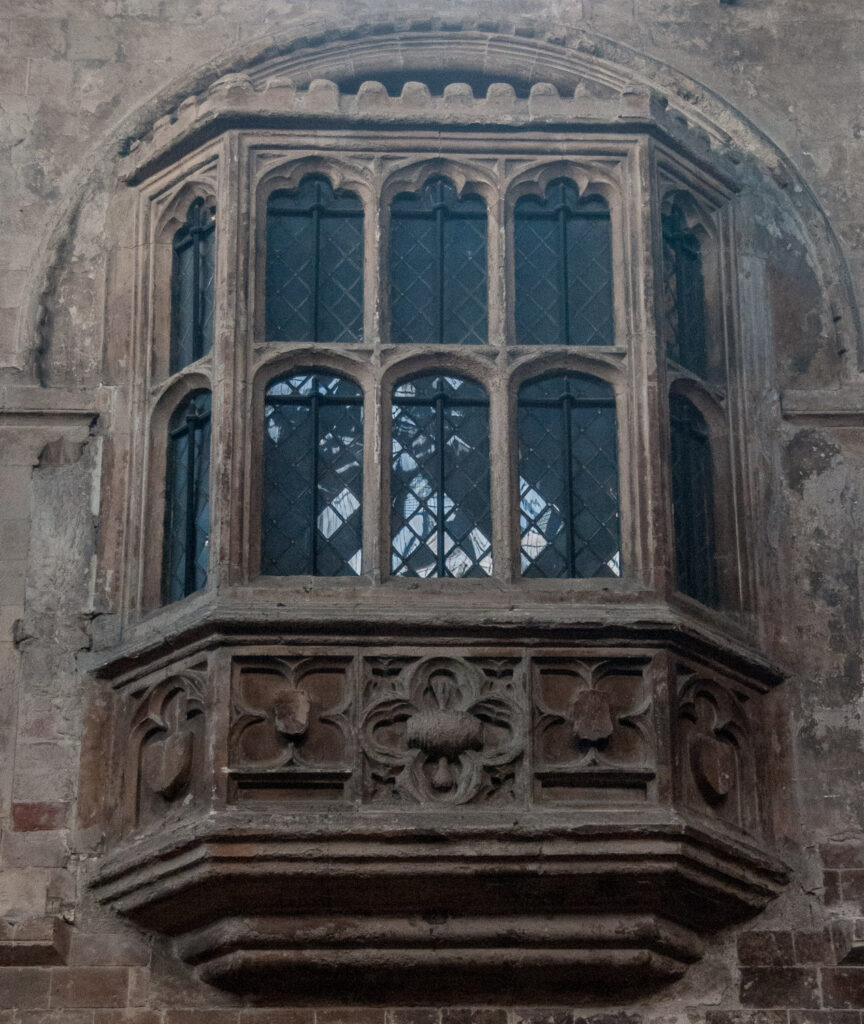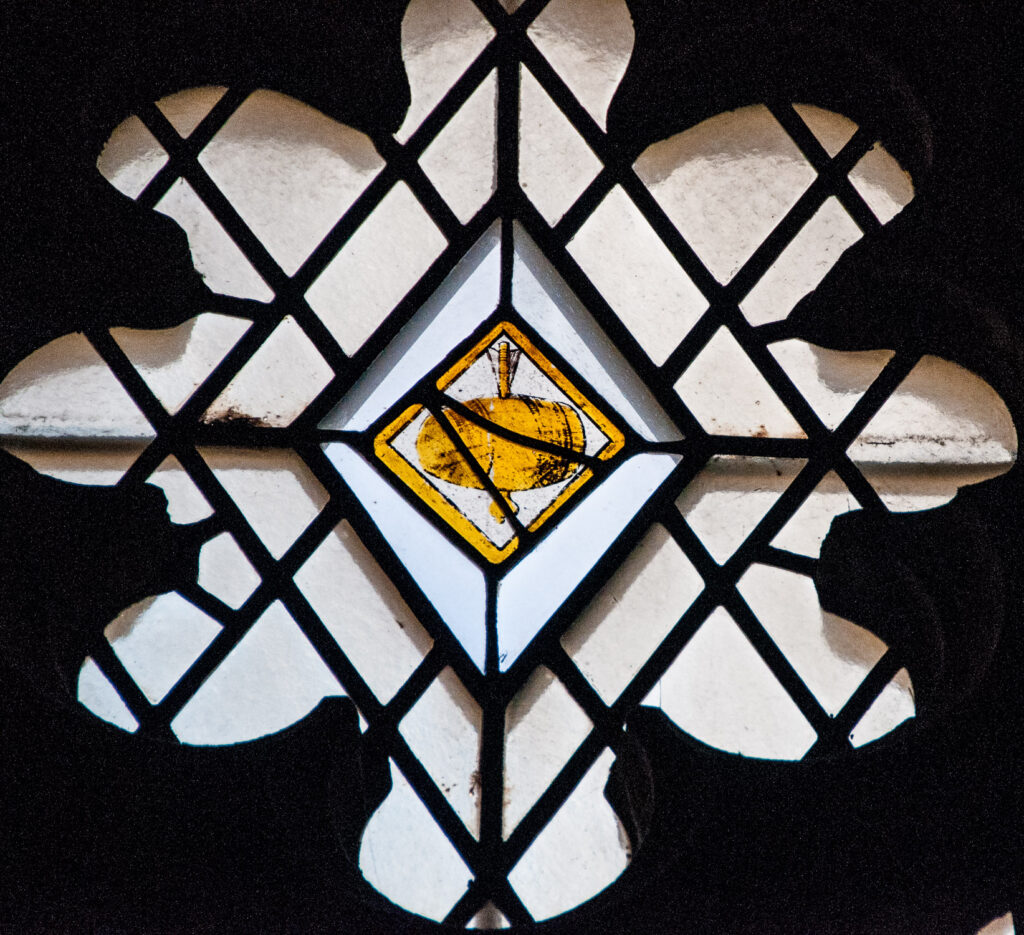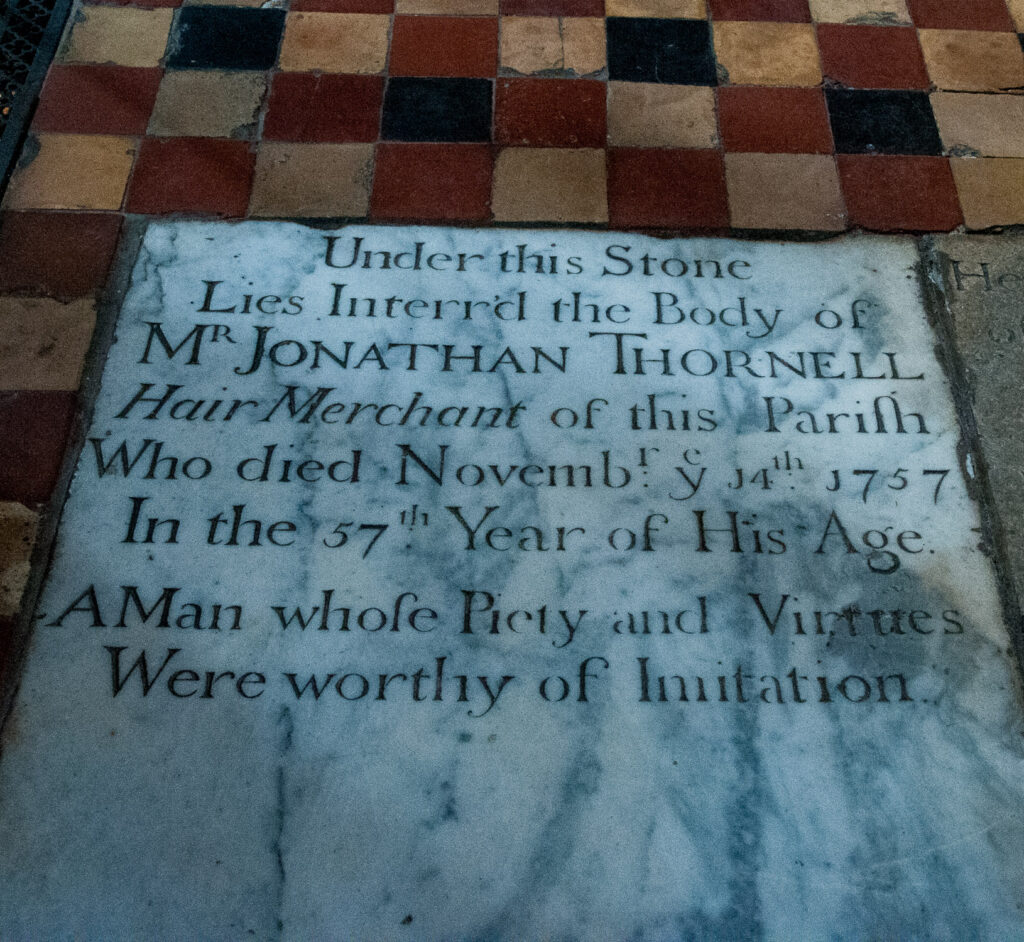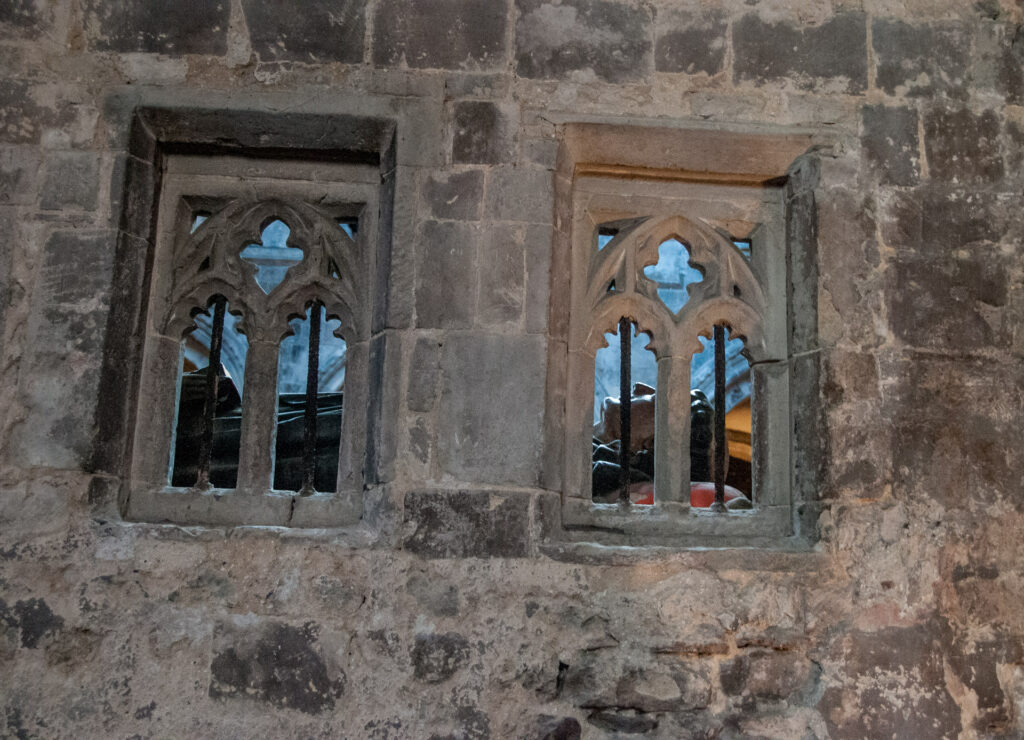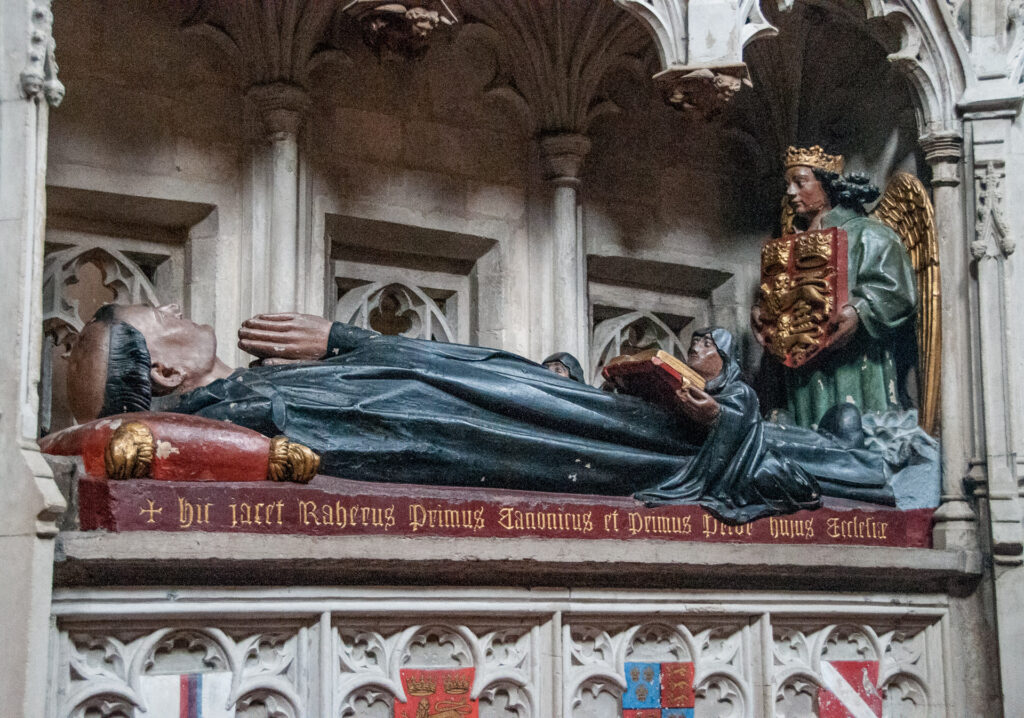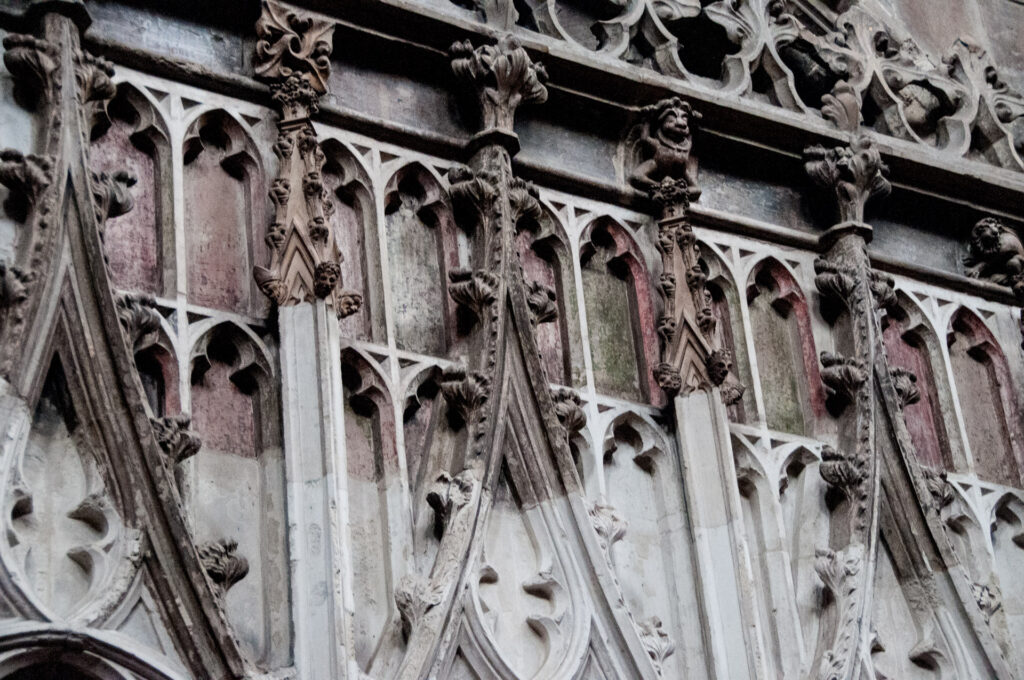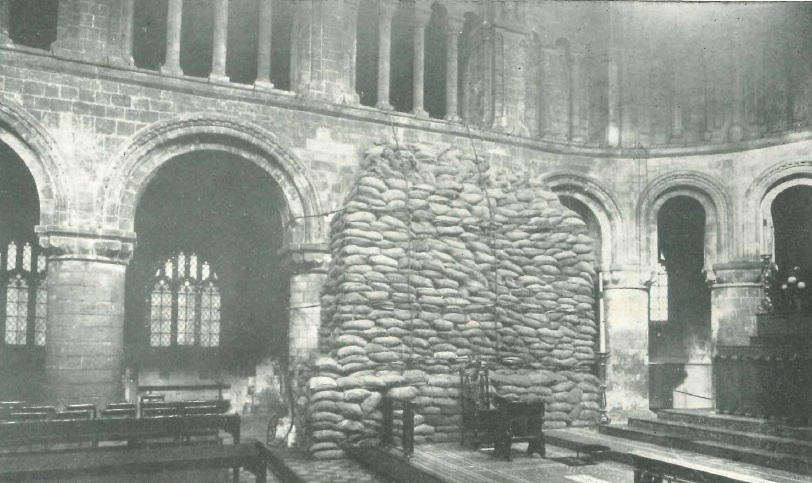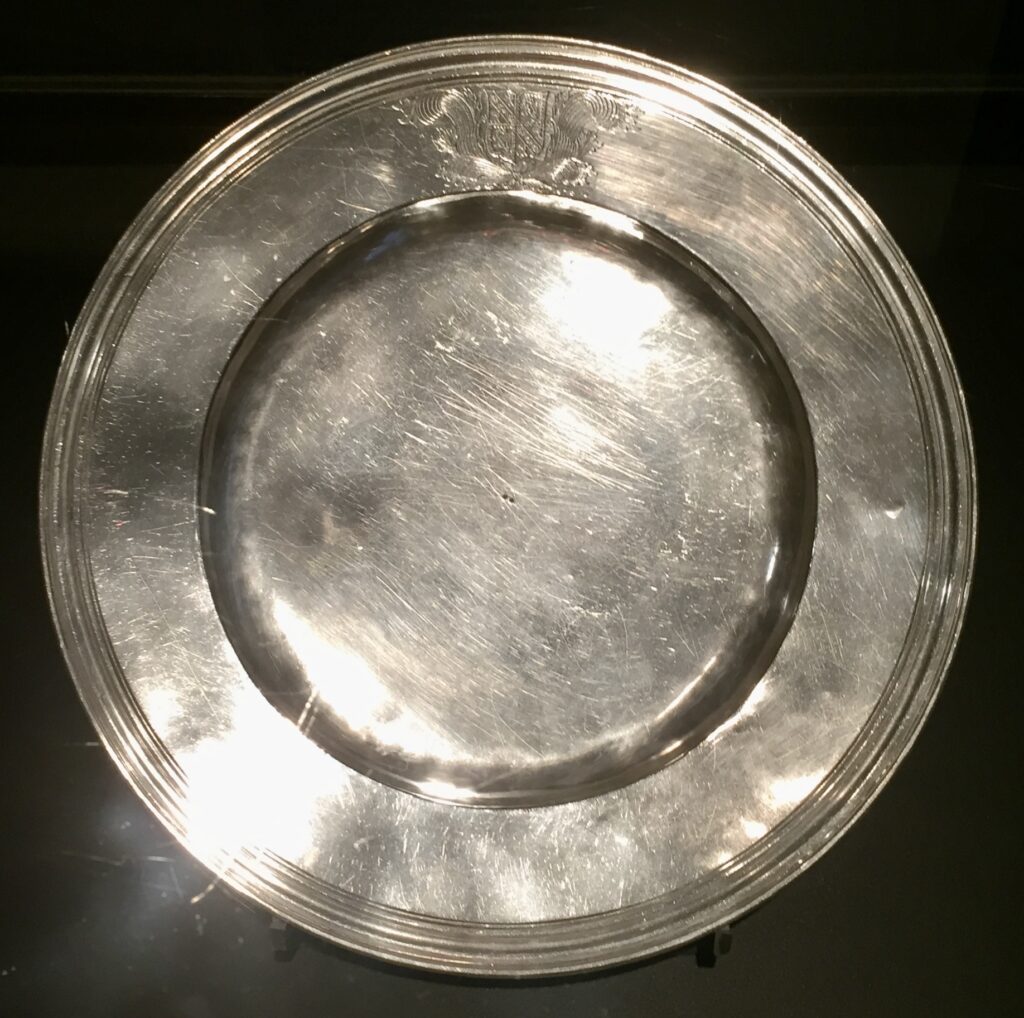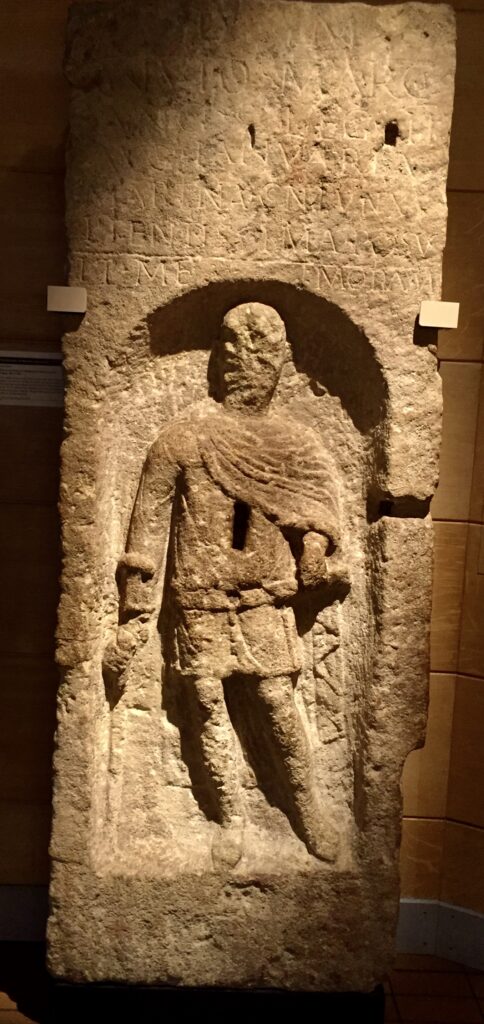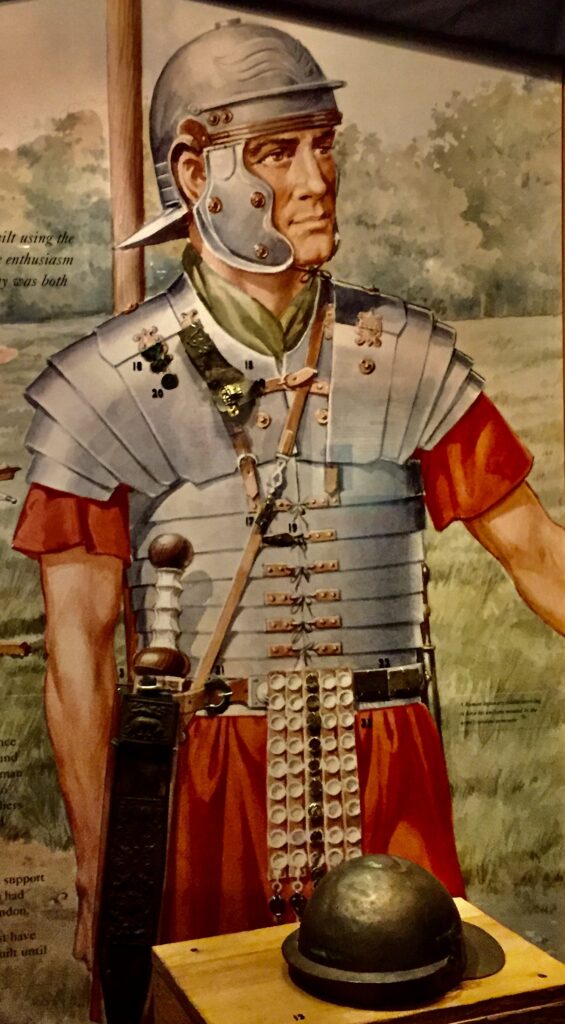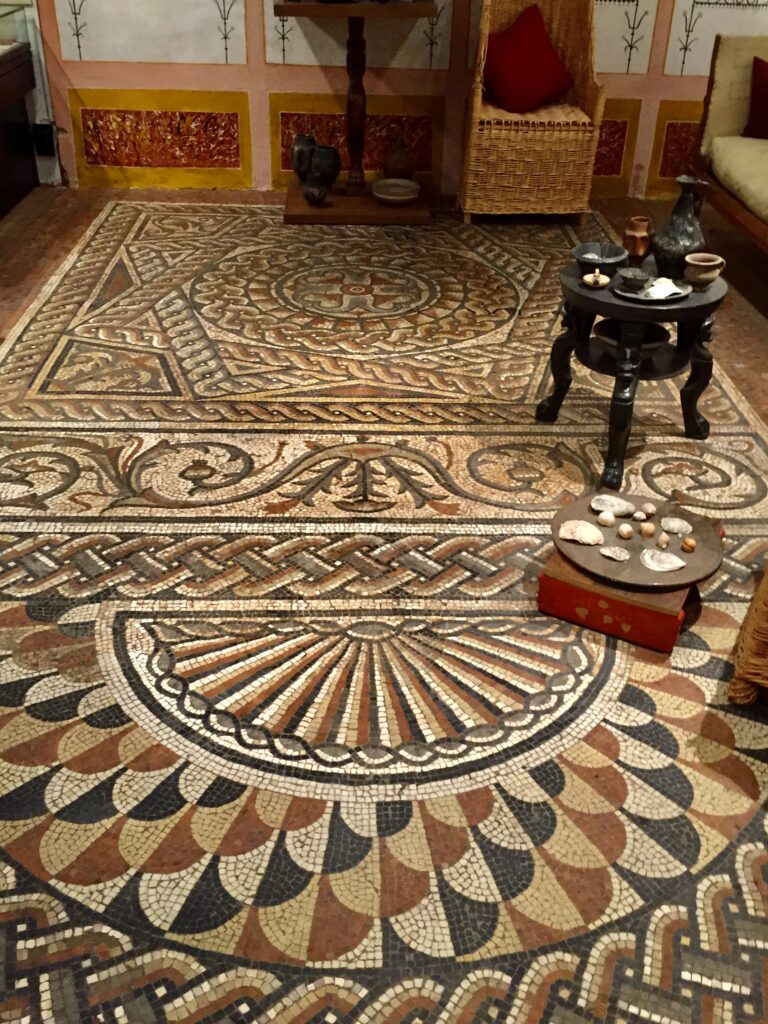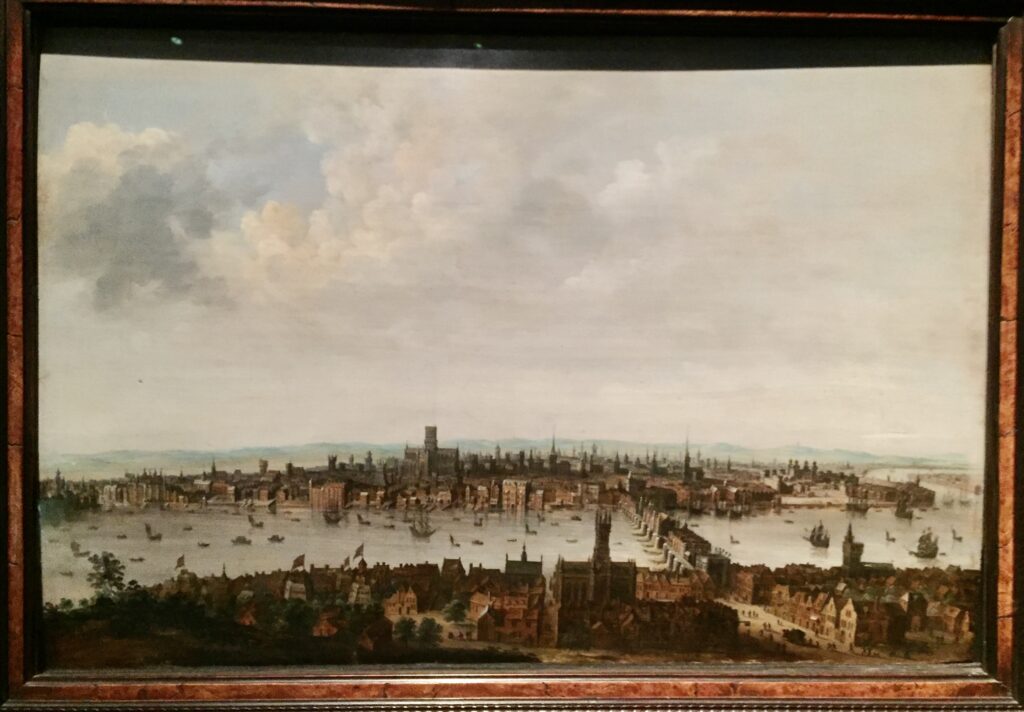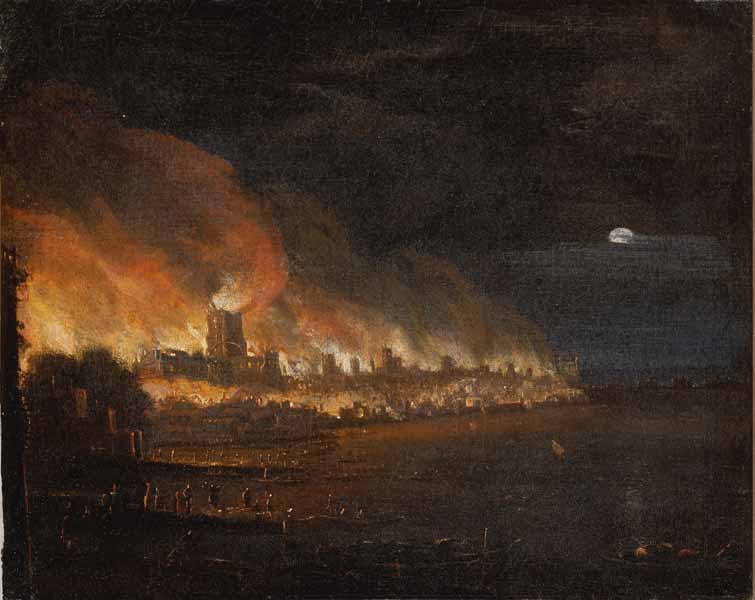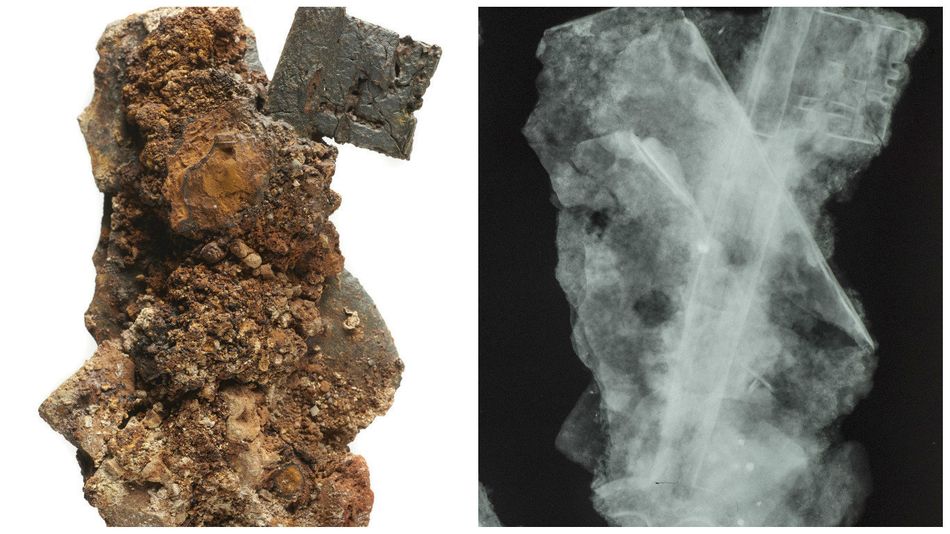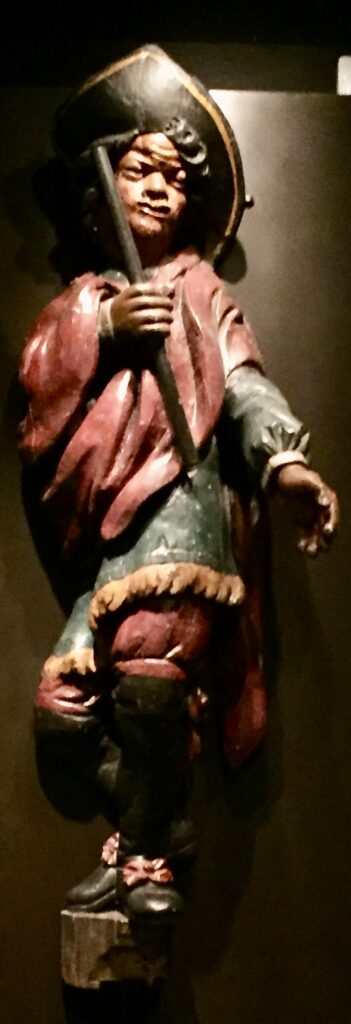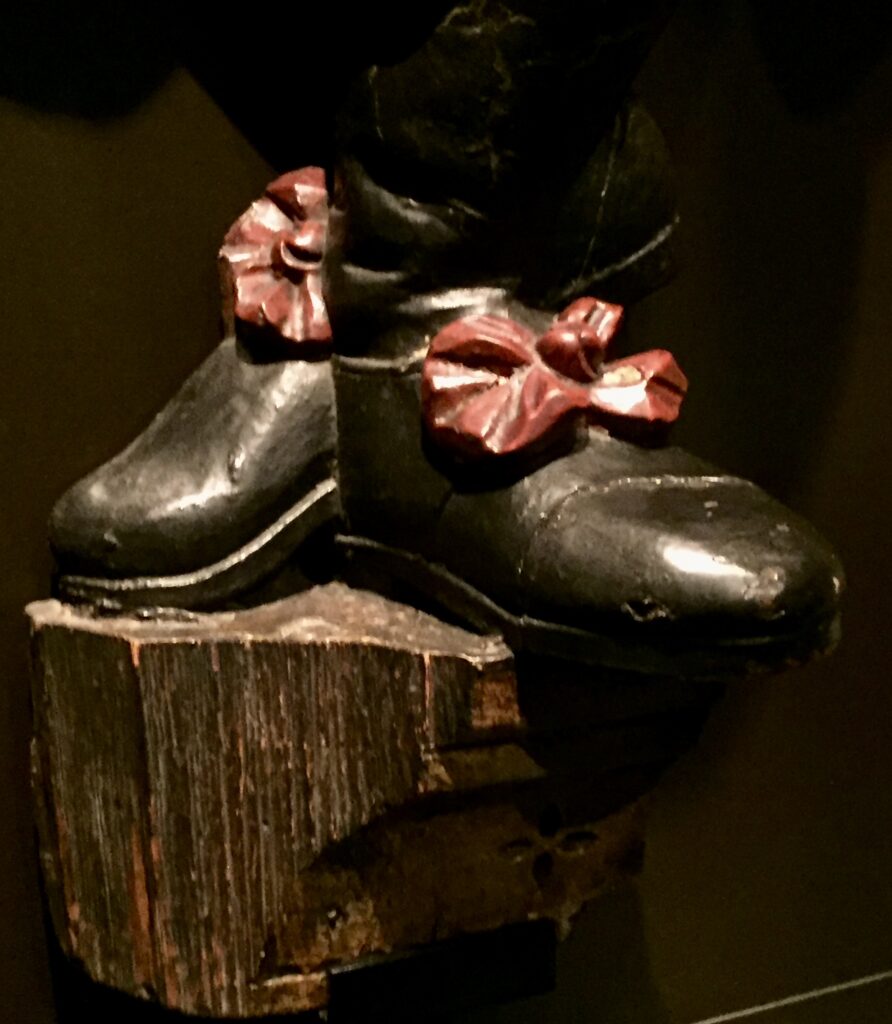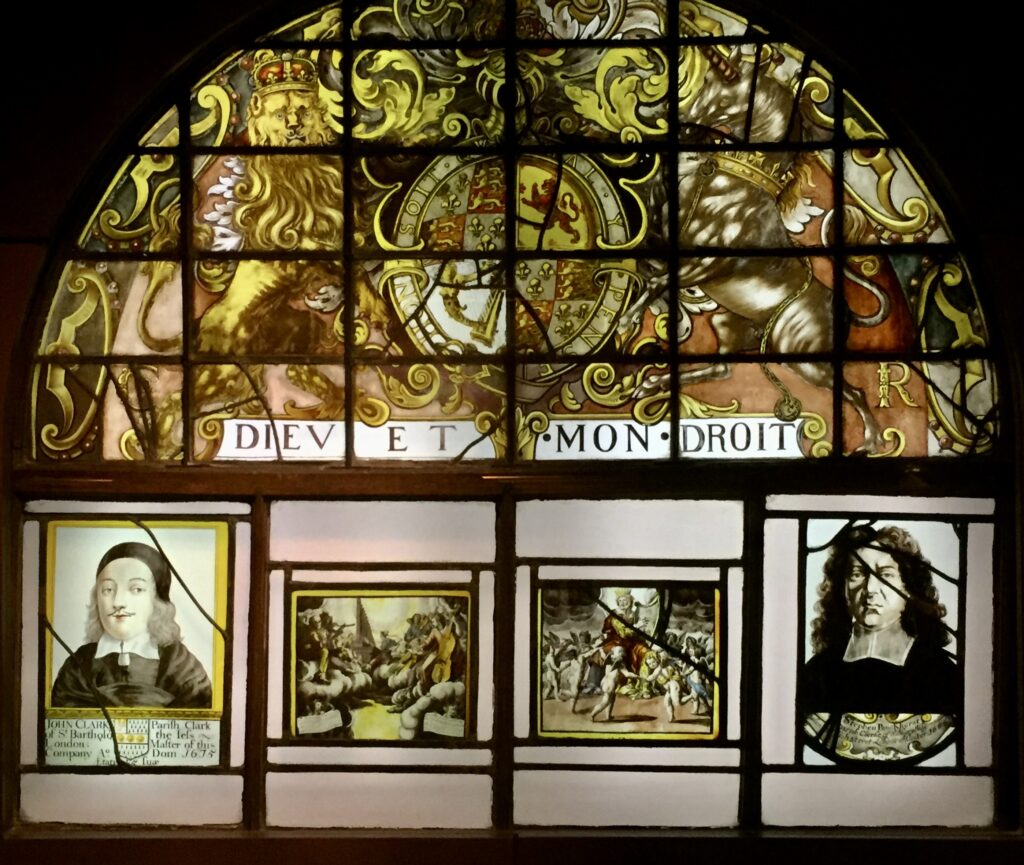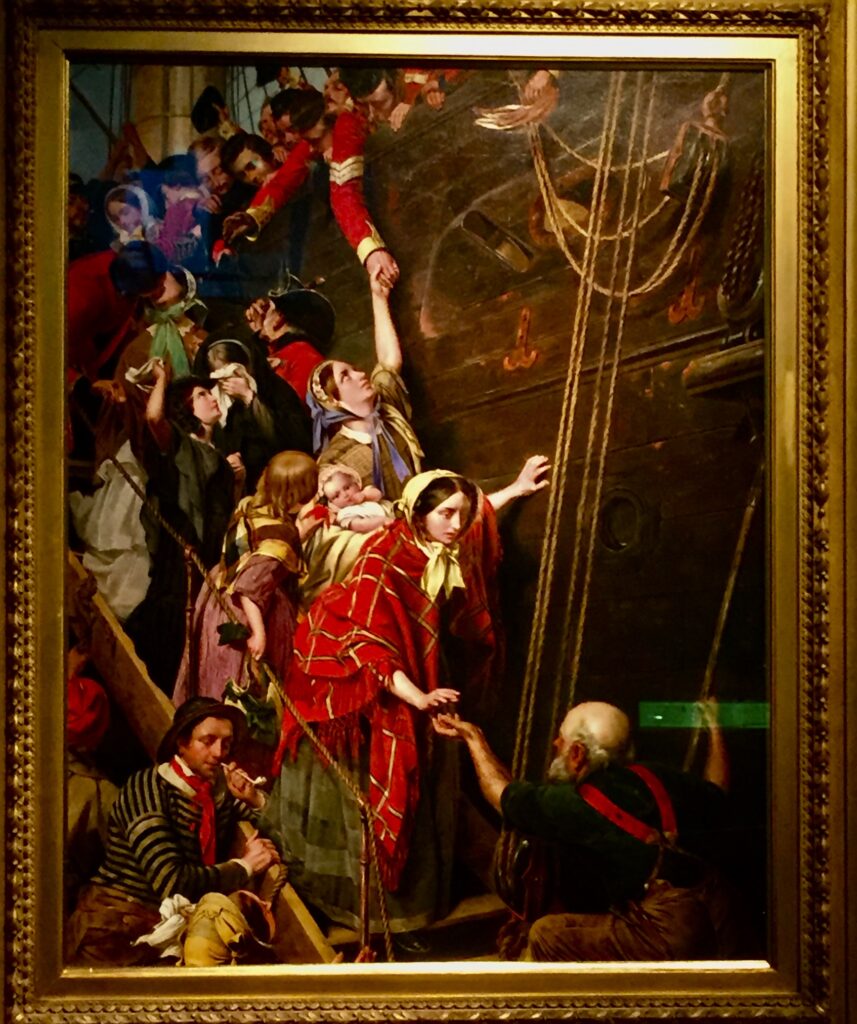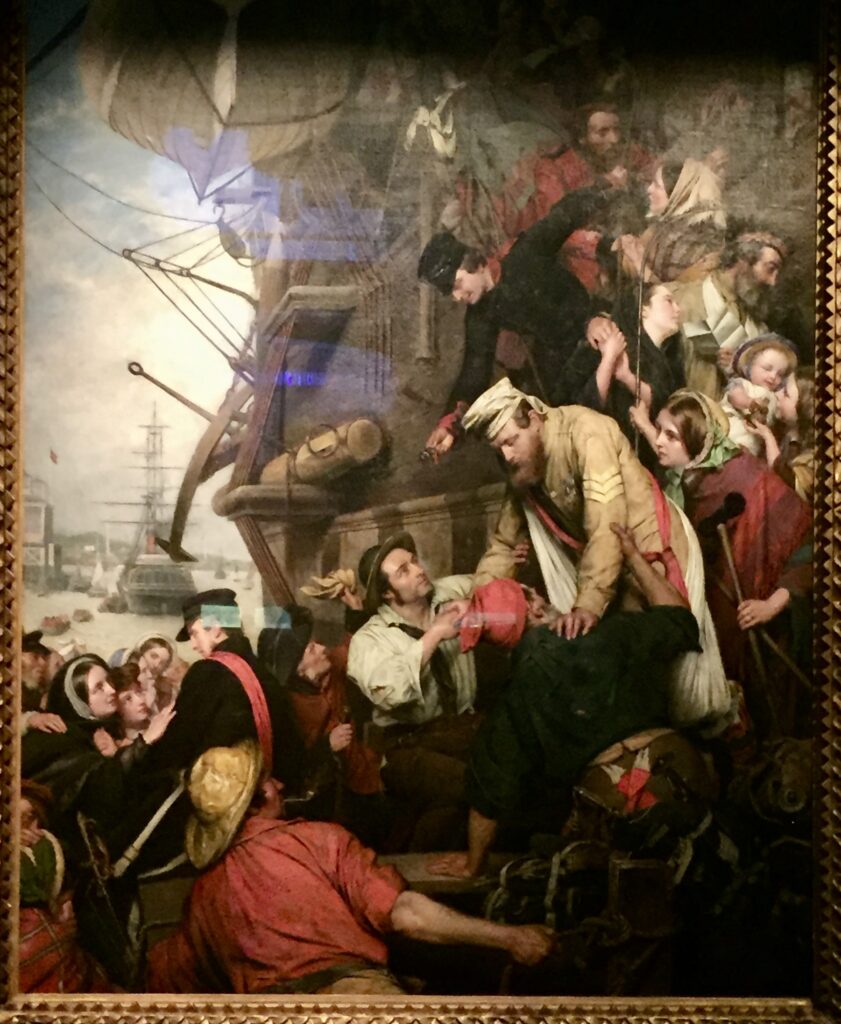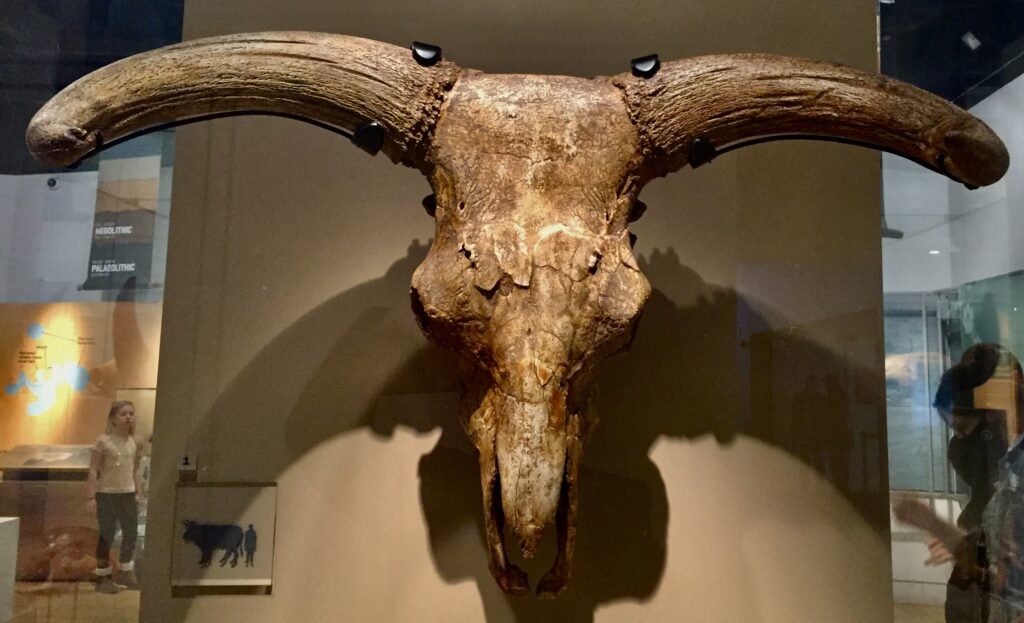Sometimes it’s just nice to set out without a specific theme or objective in mind and see what turns up.
Last week I was very lucky almost straight away because I came across these two members of the City of London mounted police perfectly posed outside the Royal Exchange …
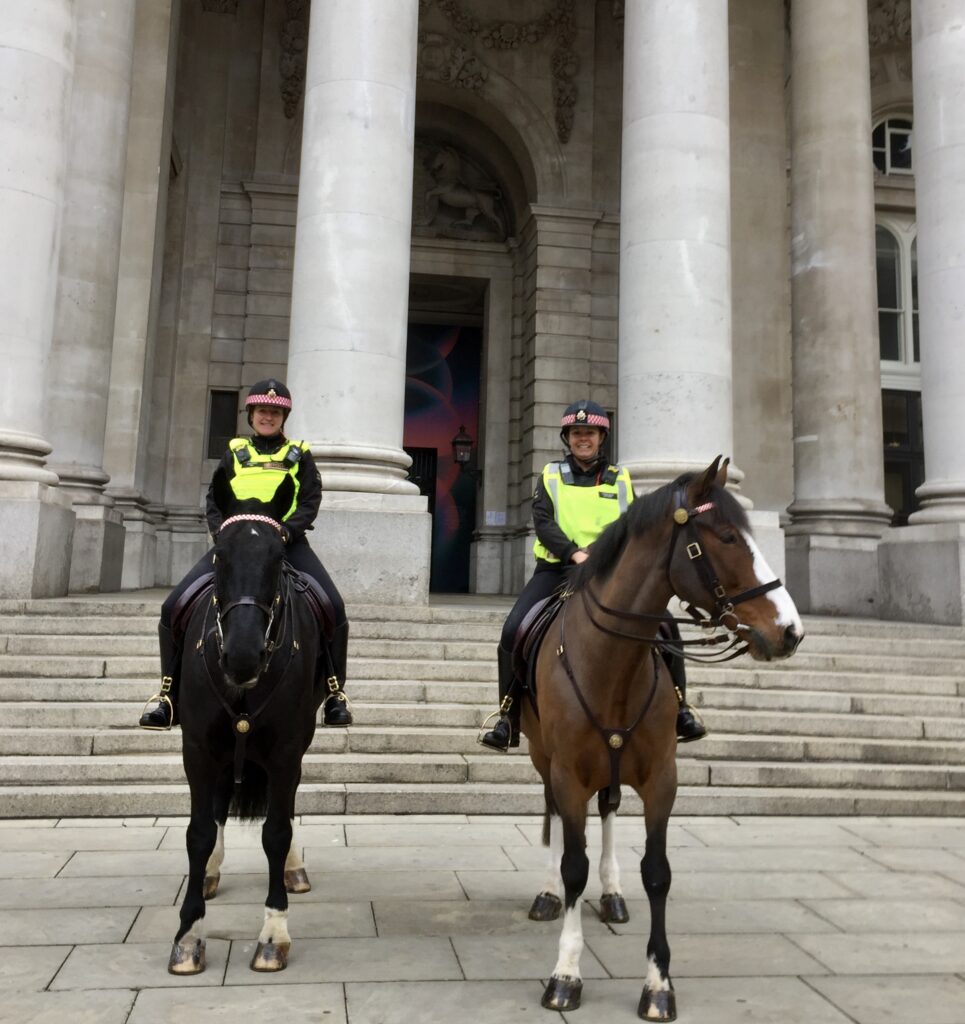
The riders and horses are based in Wood Street police station where there is a custom made stable block. The station was built in 1965, when mounted police were a much more common sight, but the officers and horses will be moving out at the end of December and the building converted to accommodation. The ladies told me that they would be temporarily based with the Metropolitan Police in the West End but will still be returning regularly to patrol the City. You can read more about the horses’ training etc. here.
Watching out over a very quiet City …
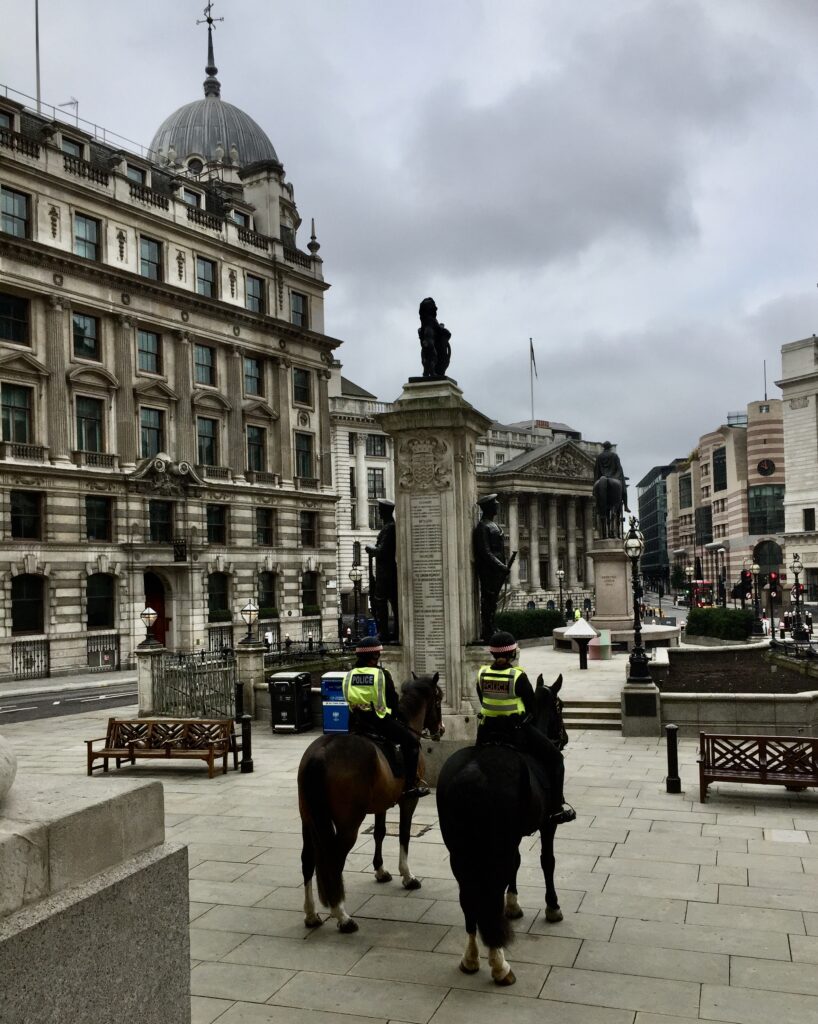
Now that Autumn is here I try to capture the changing foliage and light whenever I can. Here’s St Giles Cripplegate as seen from the podium …
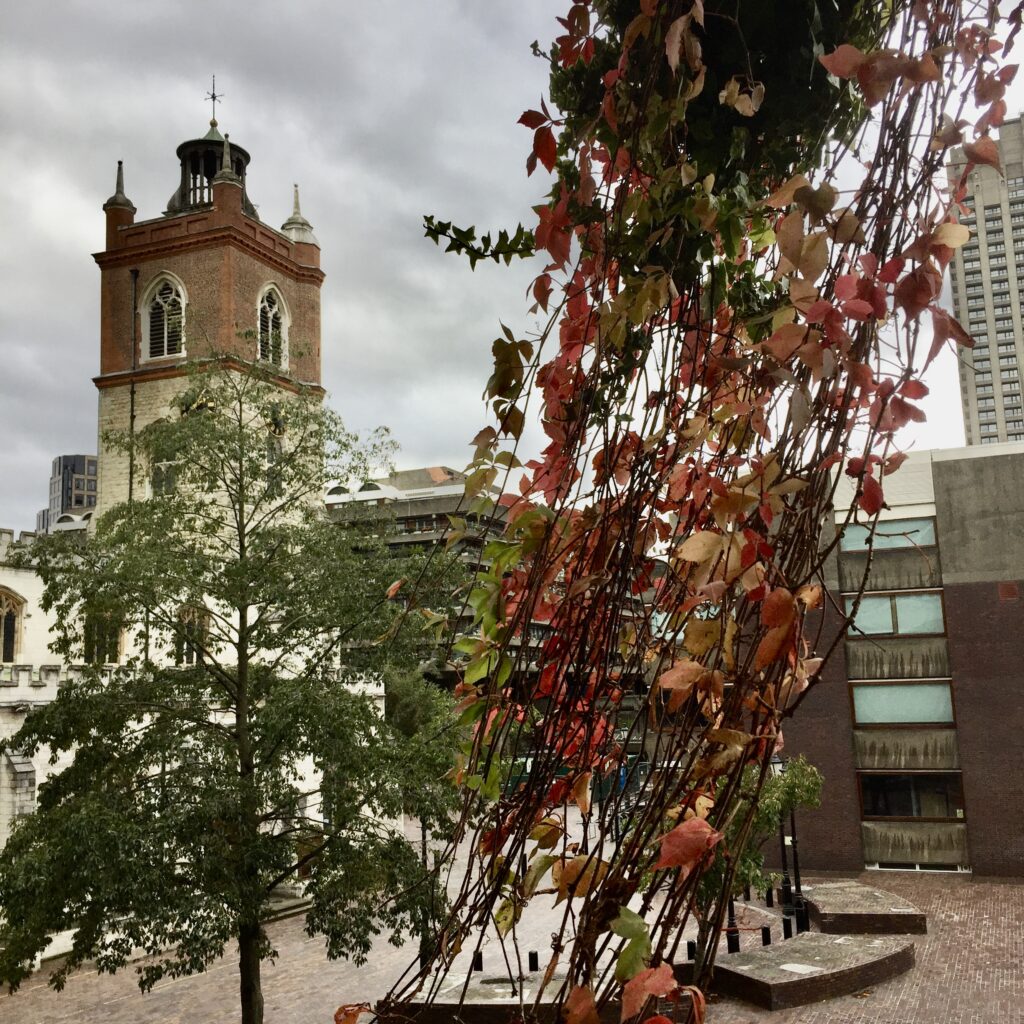
And here’s a view looking north west from Aldgate …
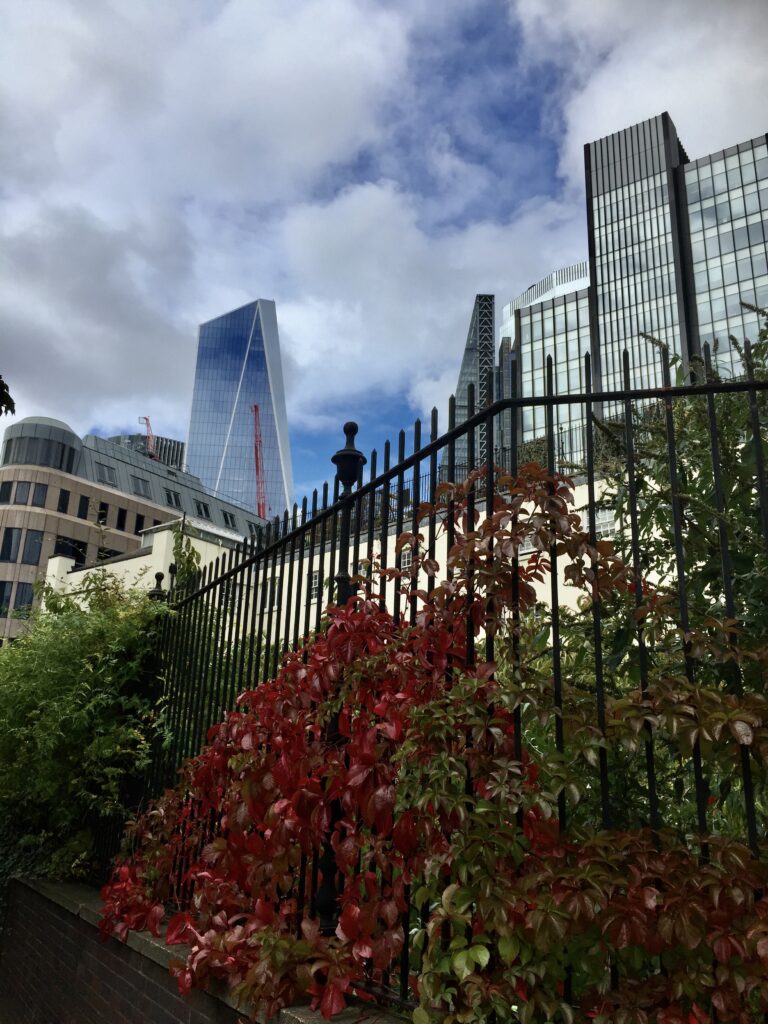
I paid a visit to the lovely little Goldsmith’s Garden on Gresham Street which used to be the churchyard of St John Zachary (destroyed in the Great Fire of 1666) …
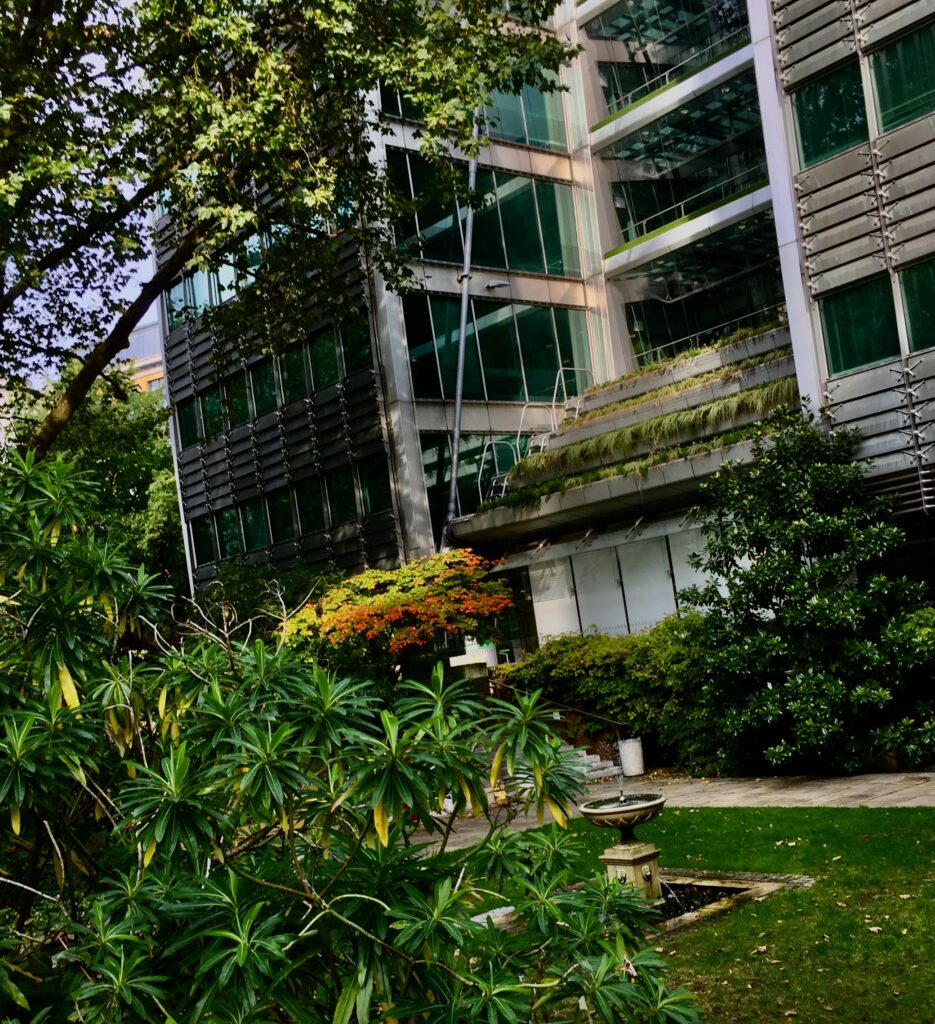
It was fun to encounter this pigeon taking a leisurely shower …
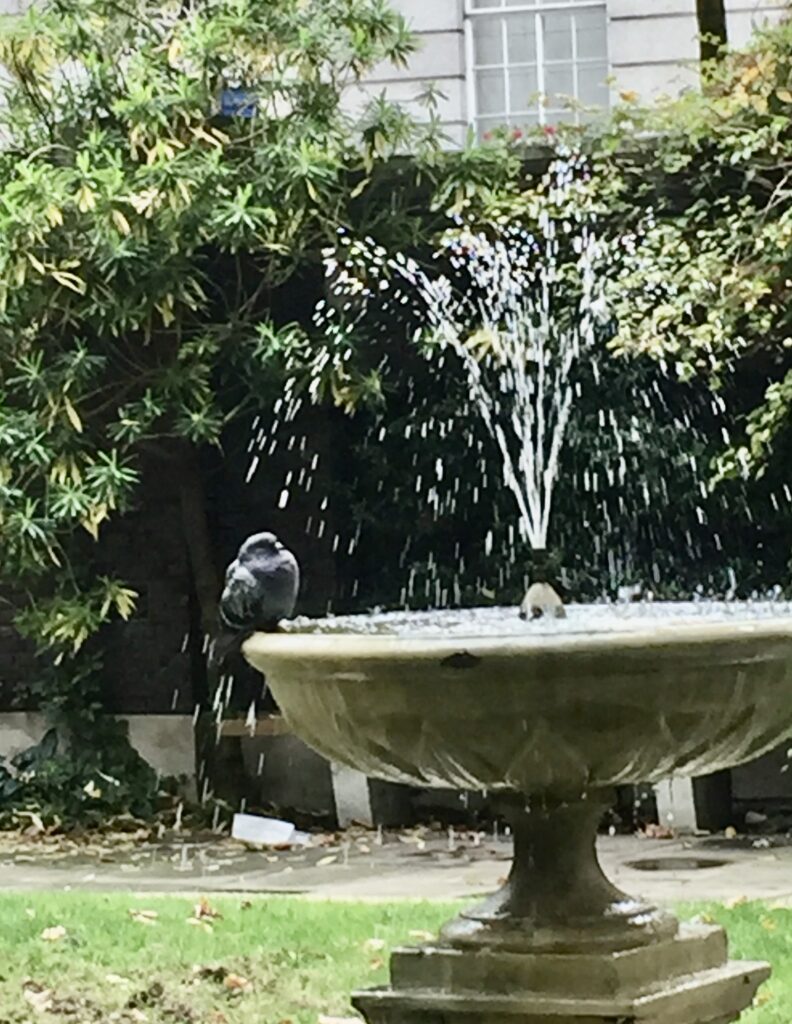
He also meticulously washed under his wings – clearly a bird keen on personal freshness …
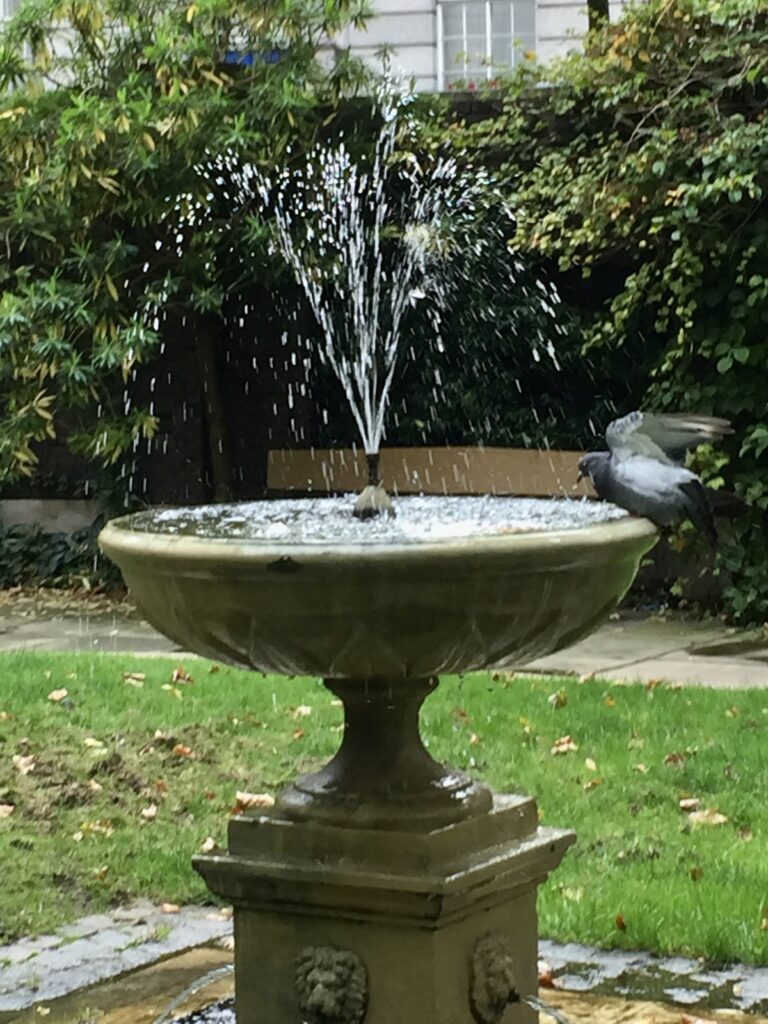
A little further along the road at St Anne and St Agnes red bricks meet Autumn leaves …
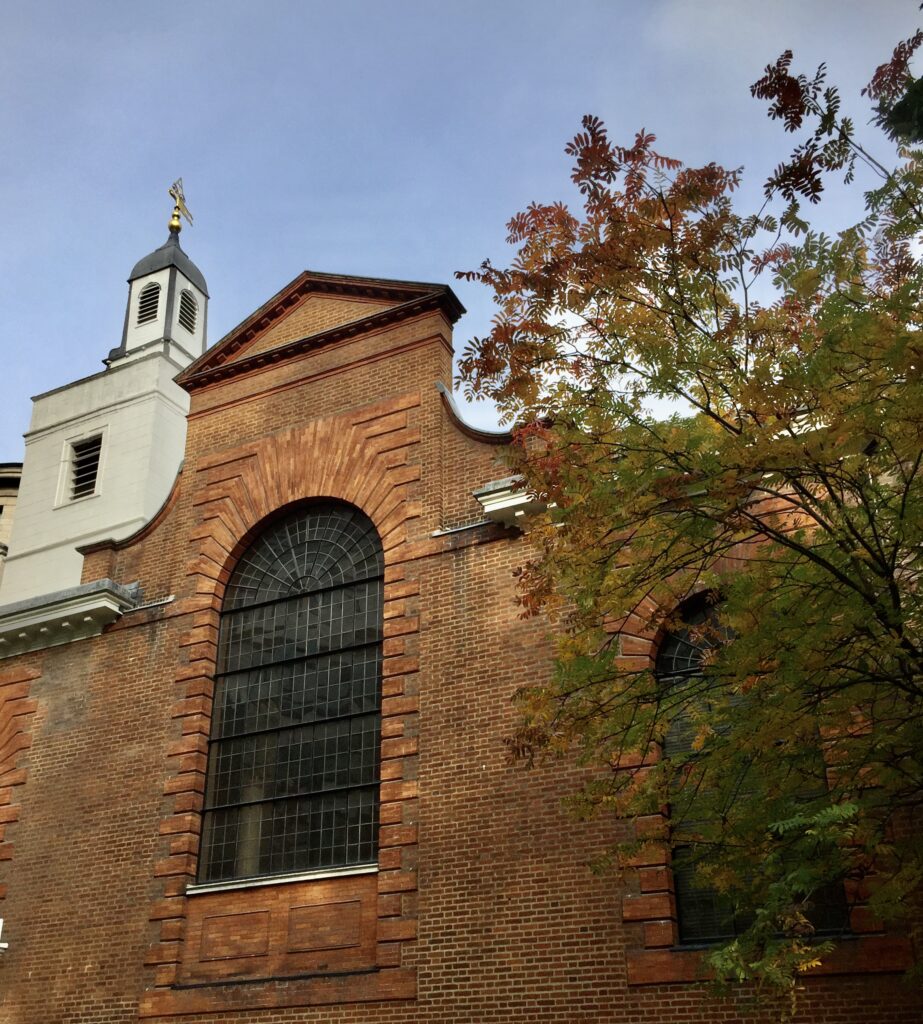
The Barbican often provides some interesting shadows, colours and reflections …
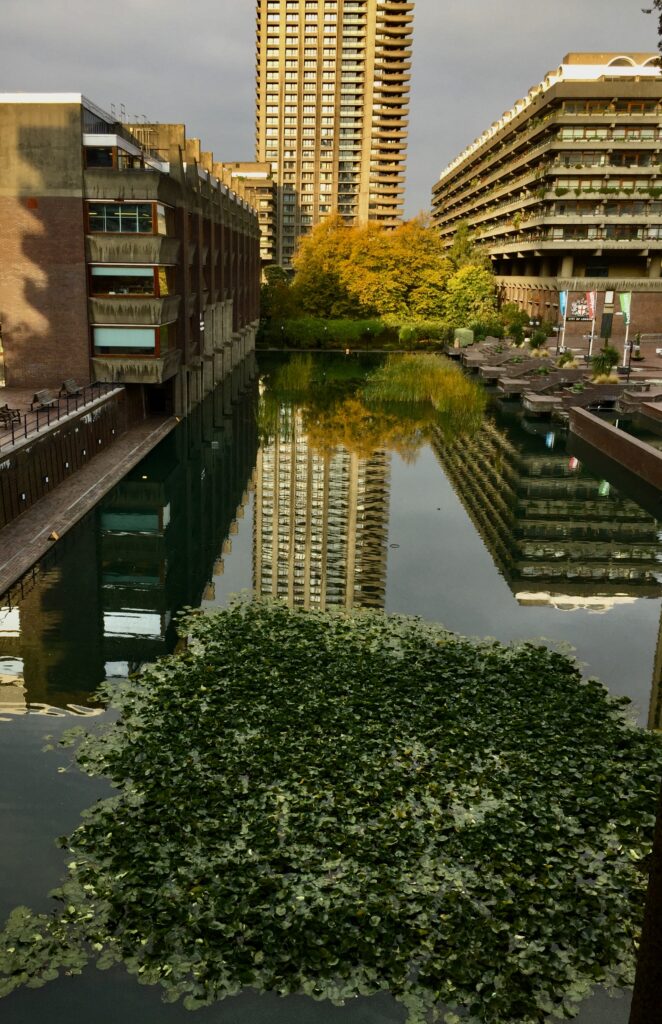
St Paul’s Cathedral with the Firefighter’s Memorial in the foreground …
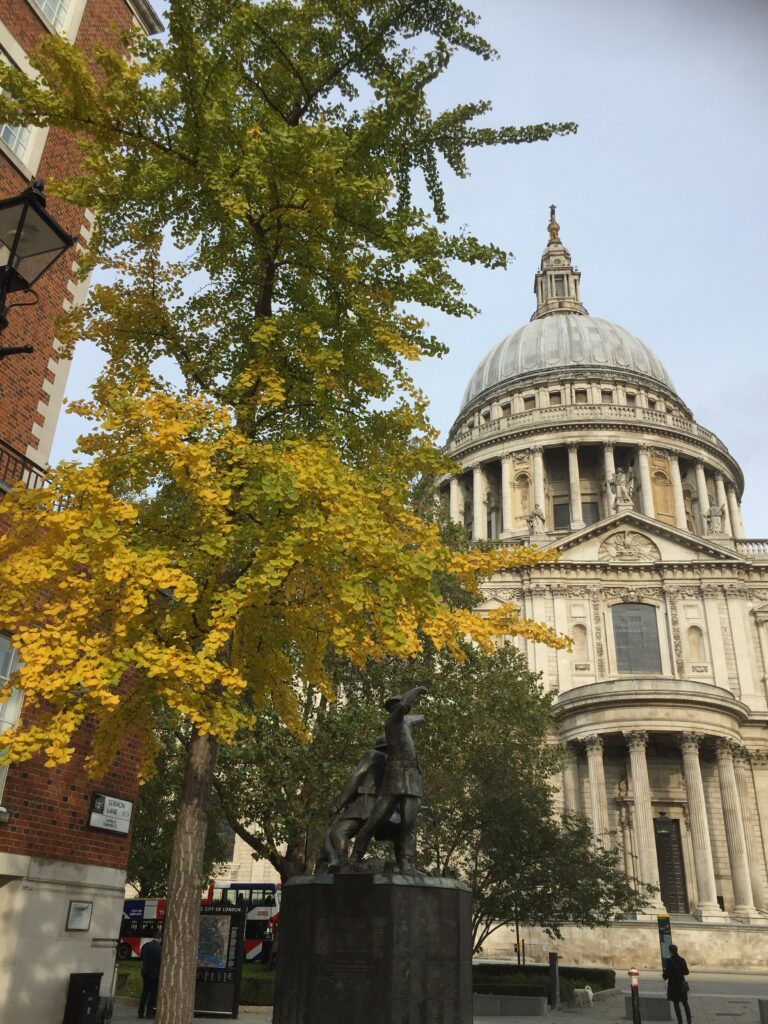
I am not a great fan of some of the new City architecture but the colours on these buildings in Old Bailey are rather jolly …
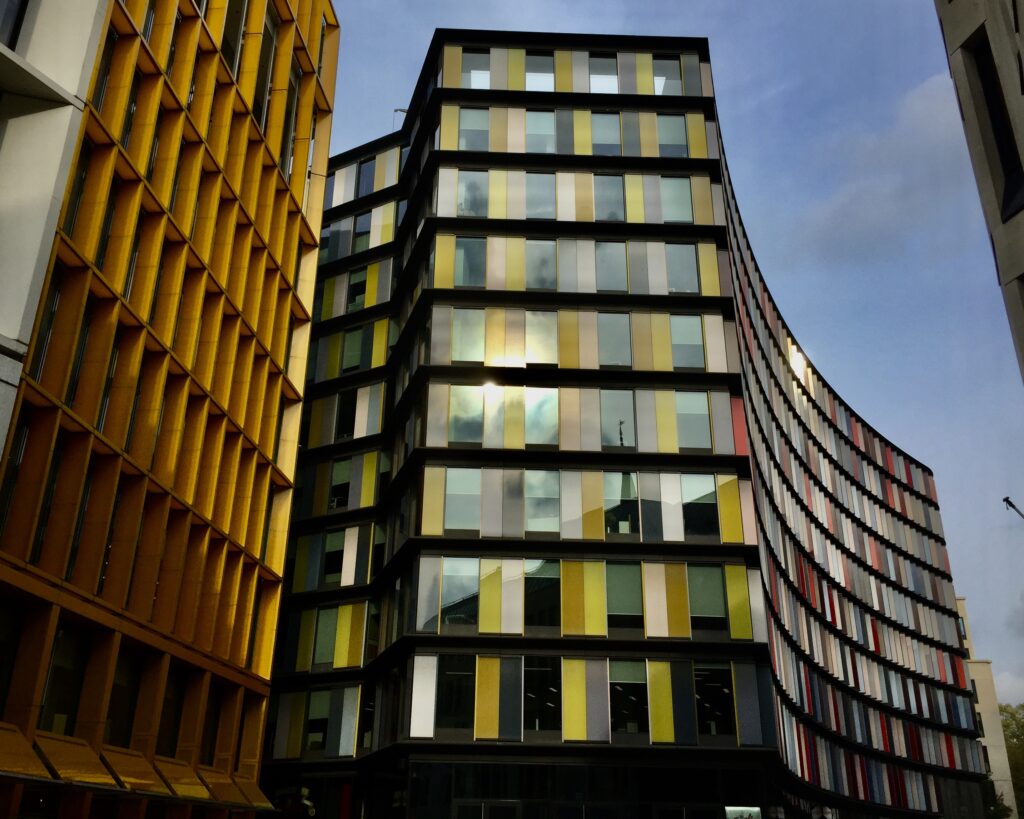
The tower of St Alban in Wood Street, all that remained of Wren’s original church after the Blitz …
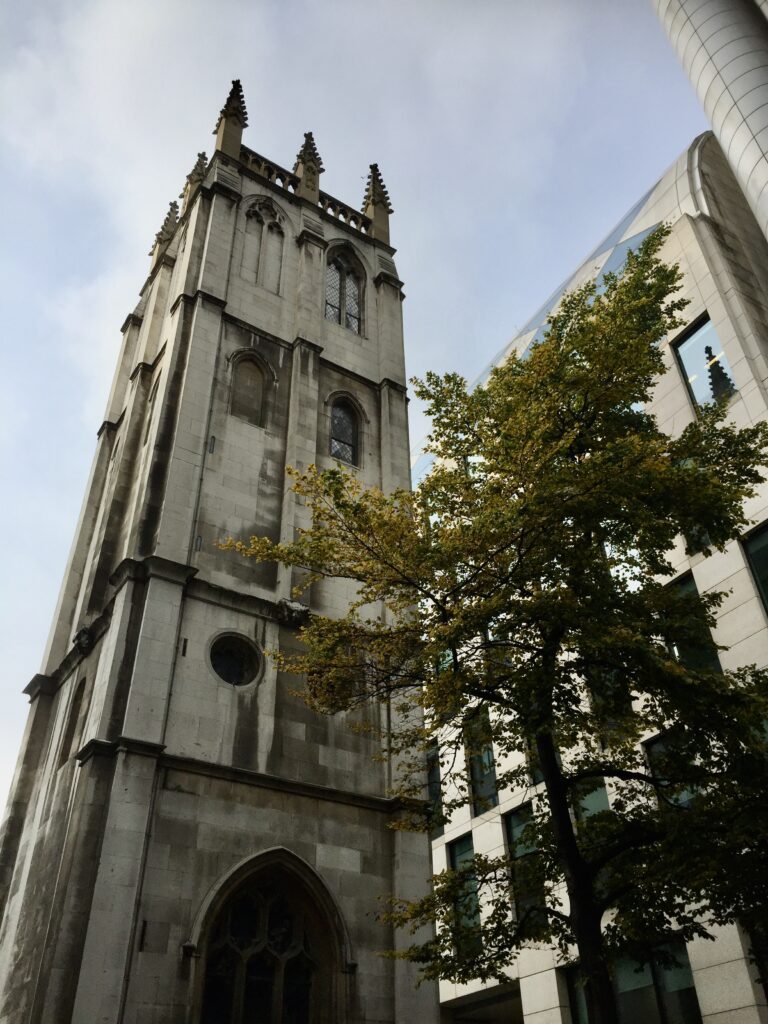
Next to St Paul’s is the only surviving part of the Church of St Augustine, also badly damaged in the War and partially rebuilt in 1966 …
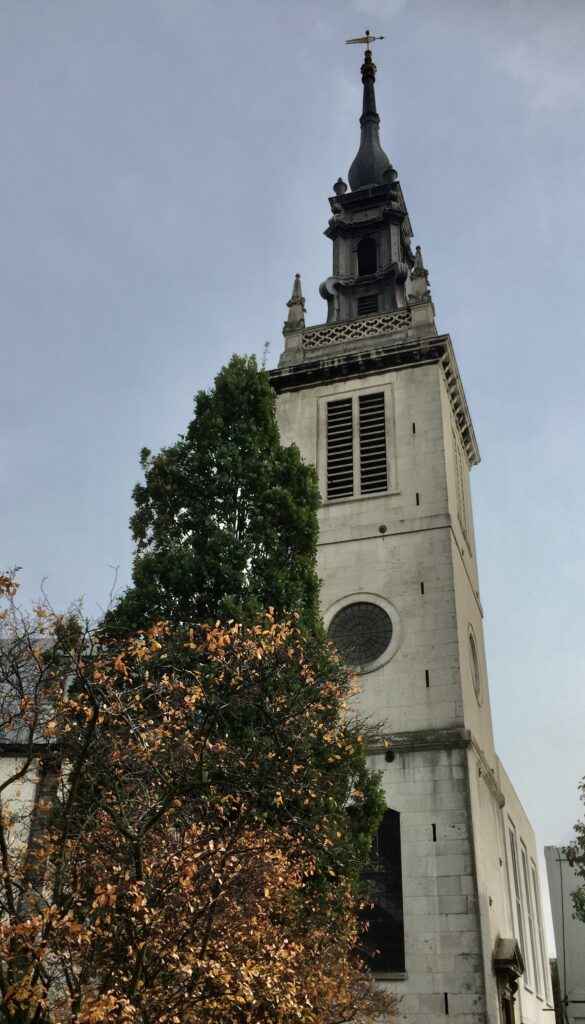
Here St Botolph Without Aldgate is framed by trees and some Art in the City …
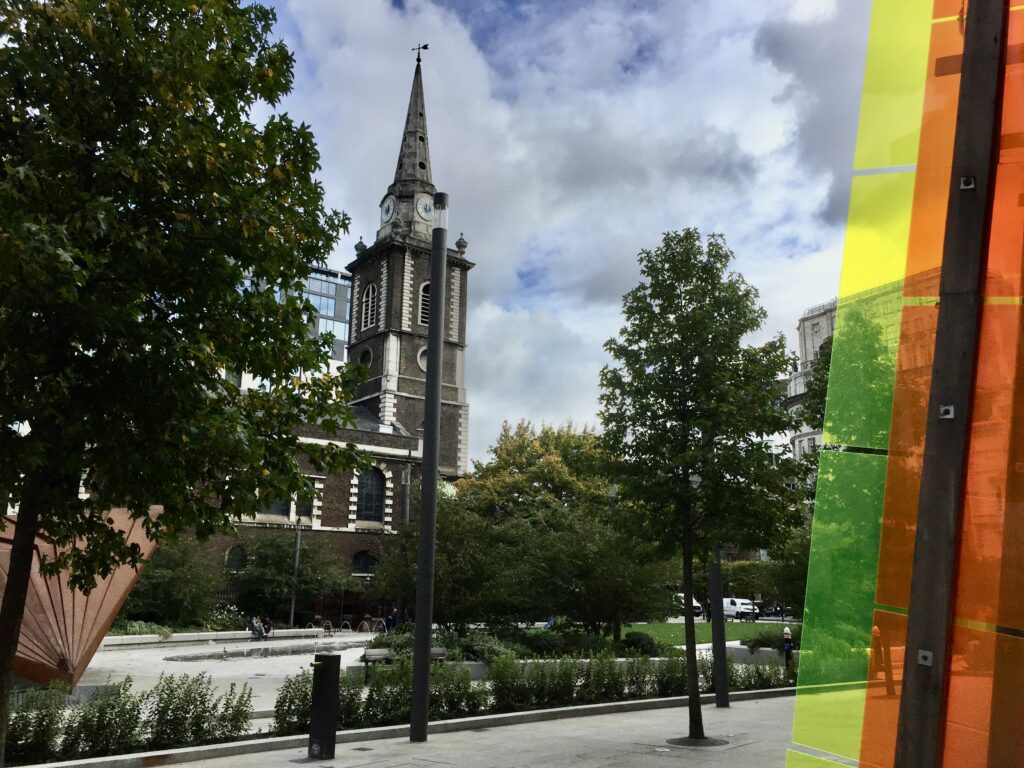
A closer view …
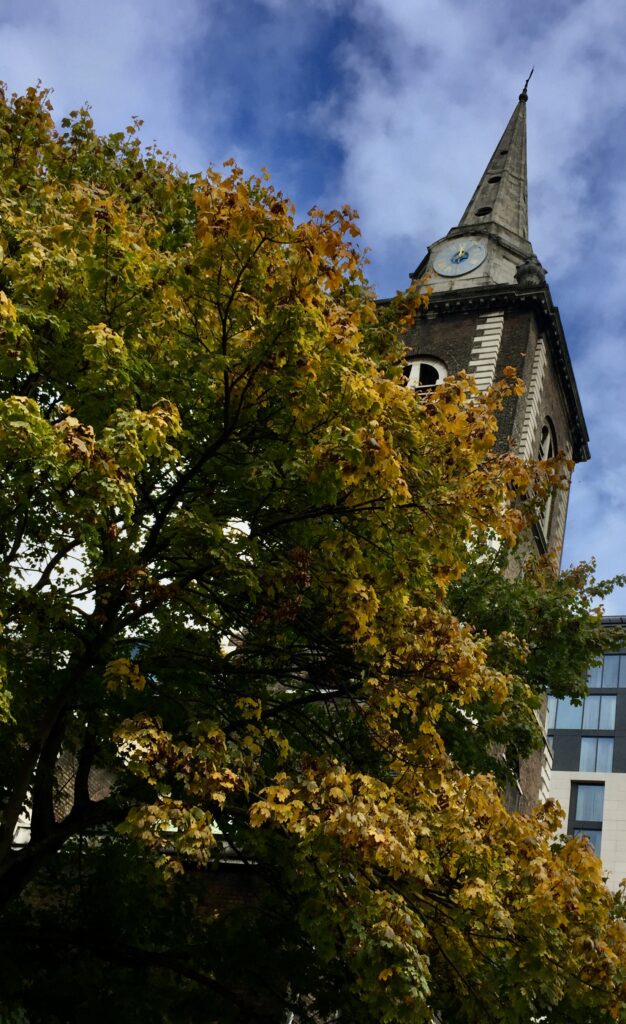
There is also some really good news in these difficult times. The gardens at Finsbury Circus have been handed back to the City now that the Crossrail work there is finished and the Mayor has launched a competition as to how they might be redesigned. You can find details here. As you can see from my picture, it really is a blank canvas …
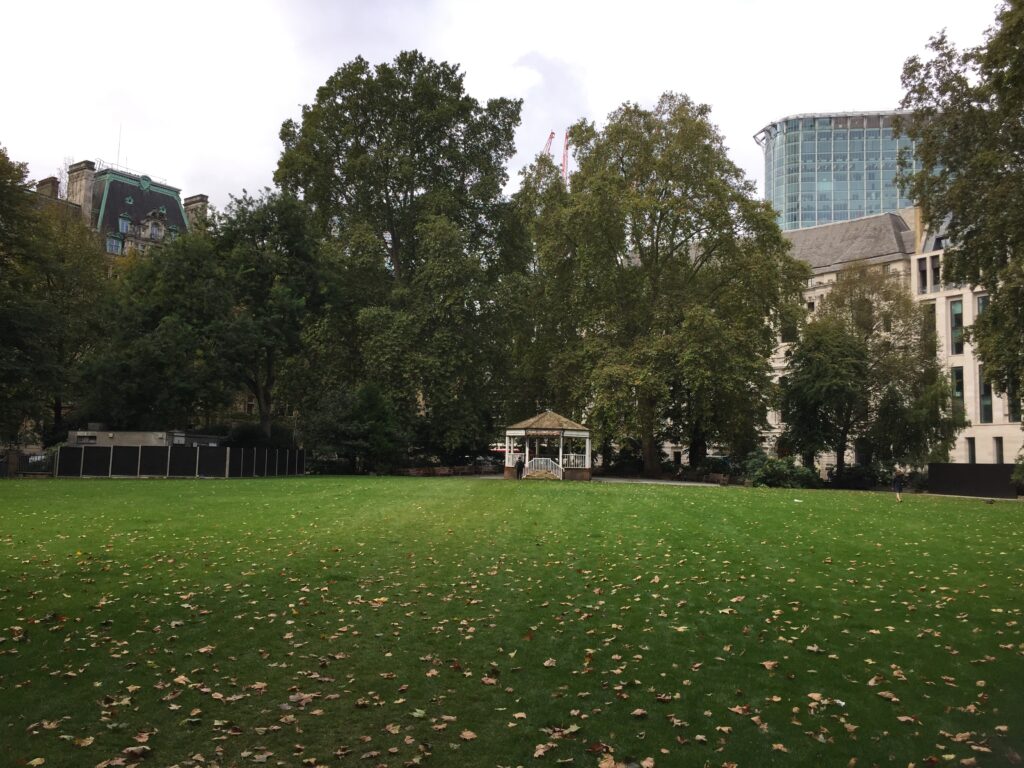
Some of the offices on the Circus have worked hard on their flower displays …
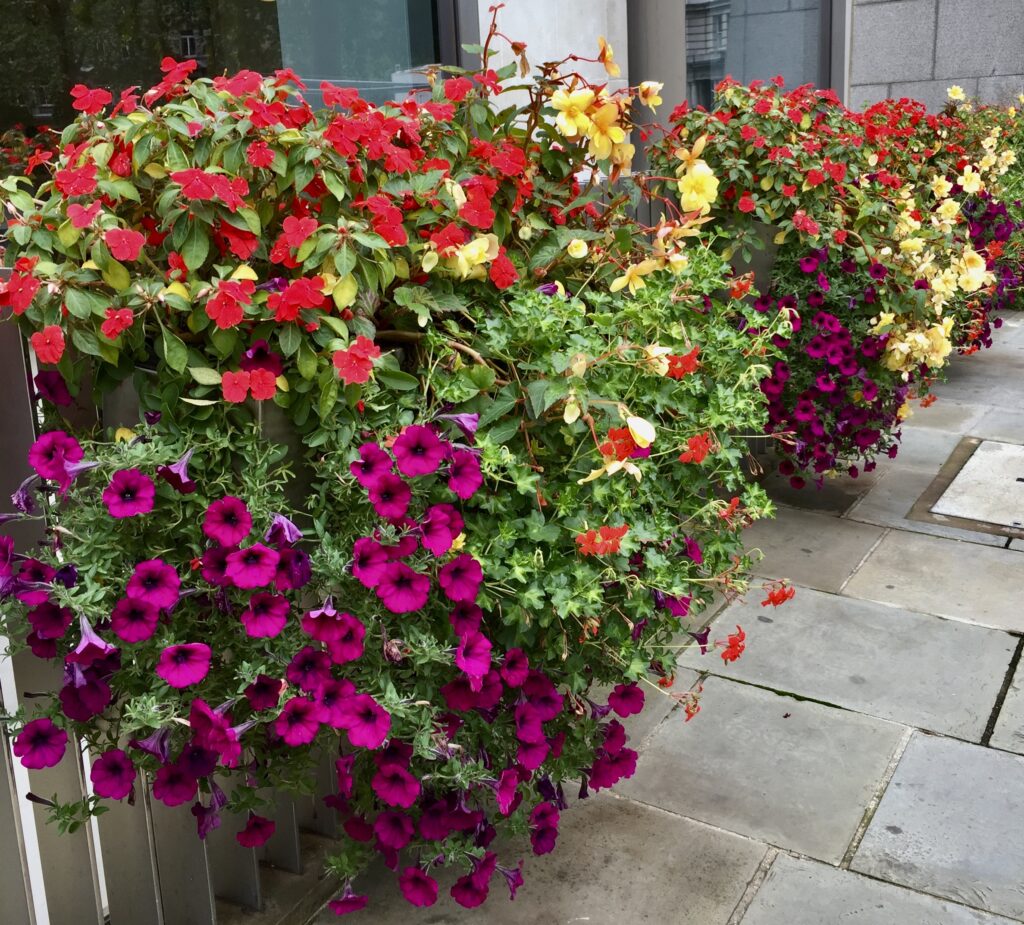
These merge nicely with the floral decorated stonework …
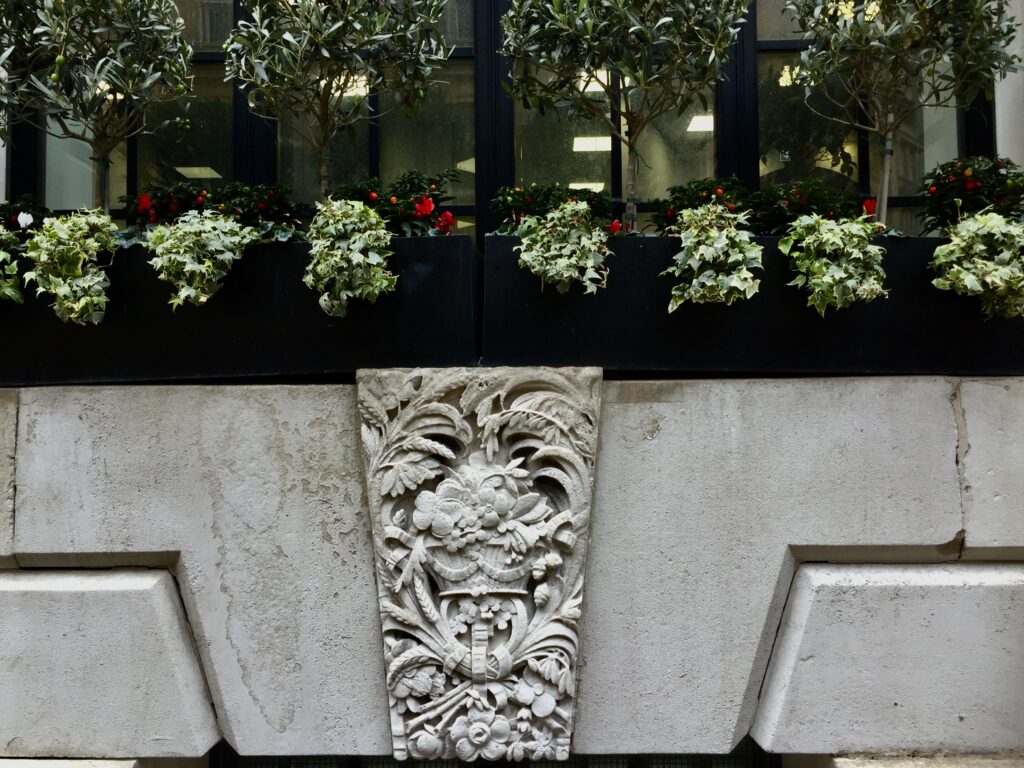
Finally, a few quirky items.
Caught in mid-air – Parkour at the Barbican …
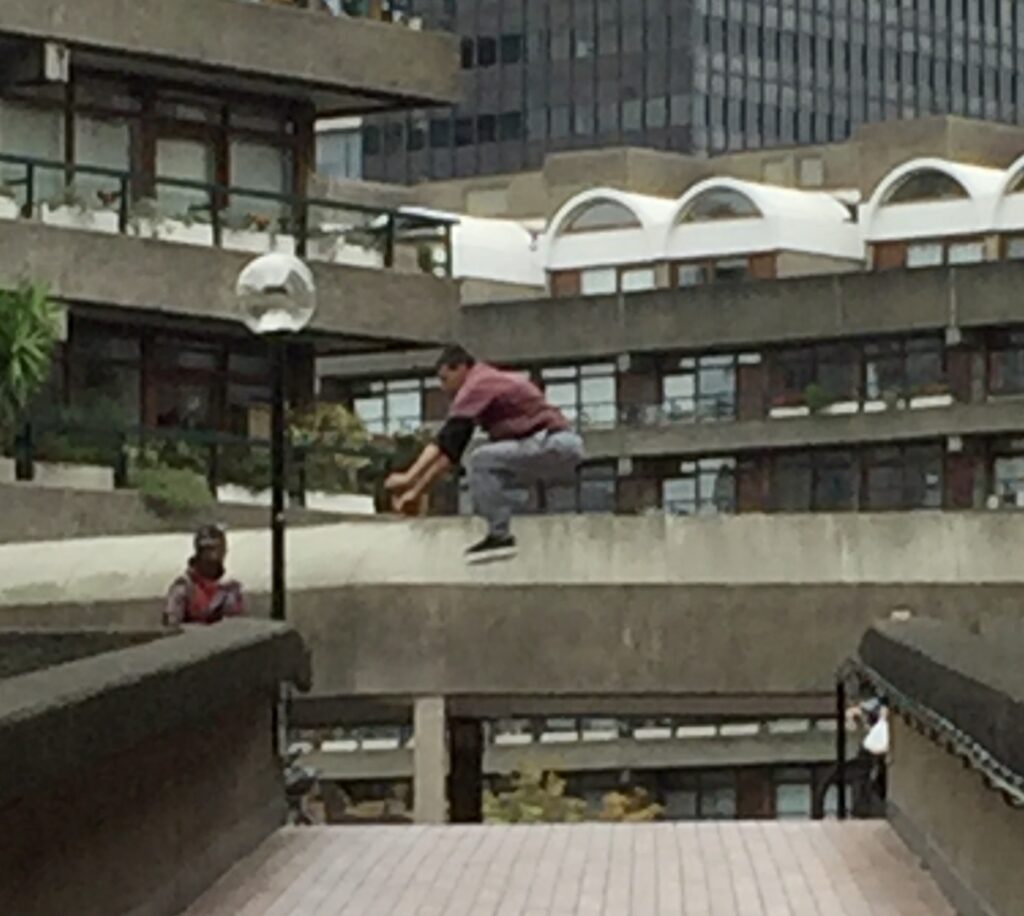
… and how on earth did these quad bikes end up in a skip on Beech Street?
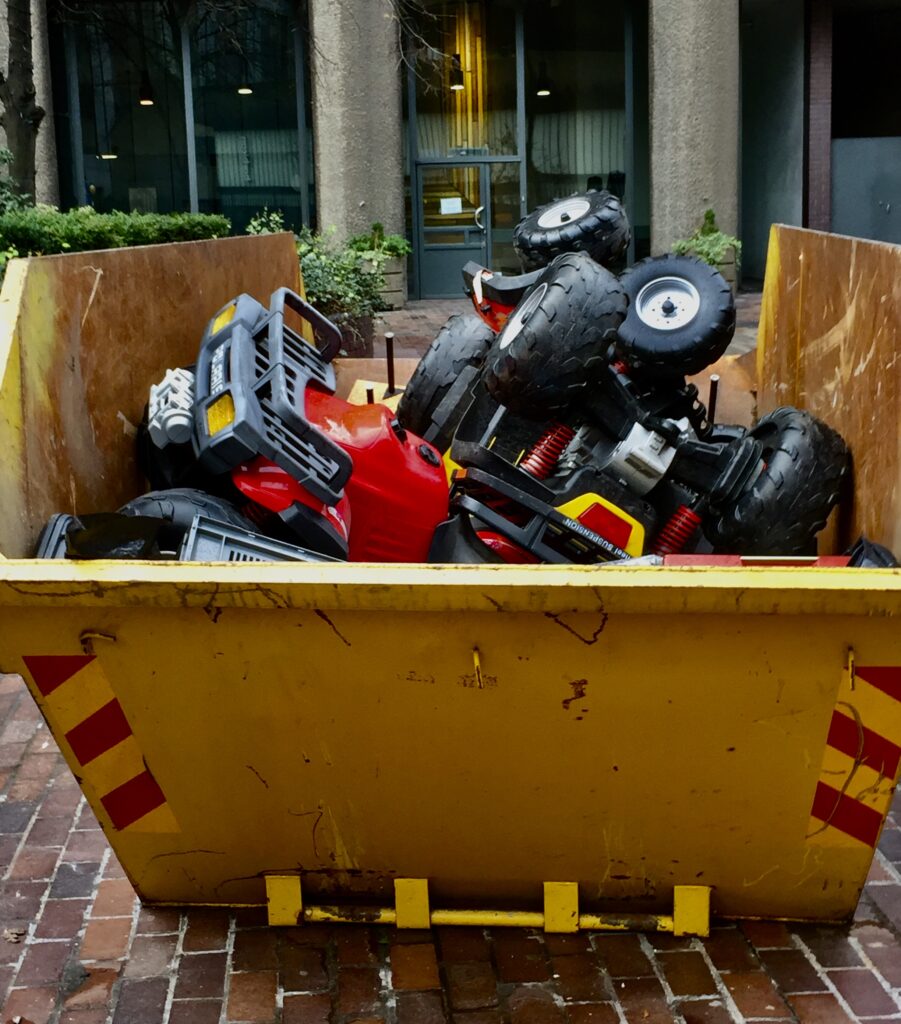
If you would like to follow me on Instagram here is the link …
